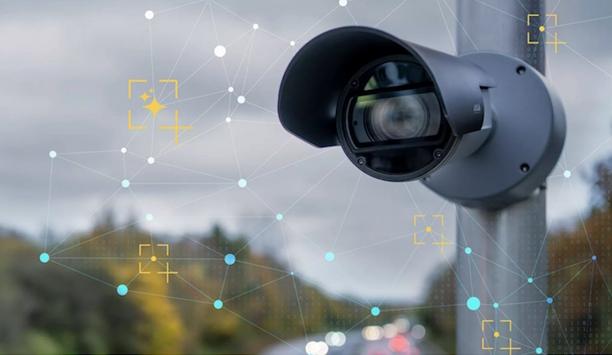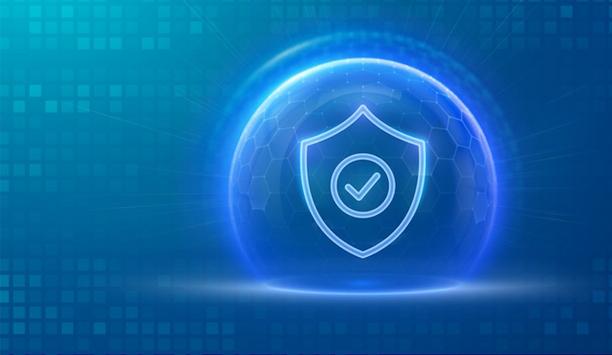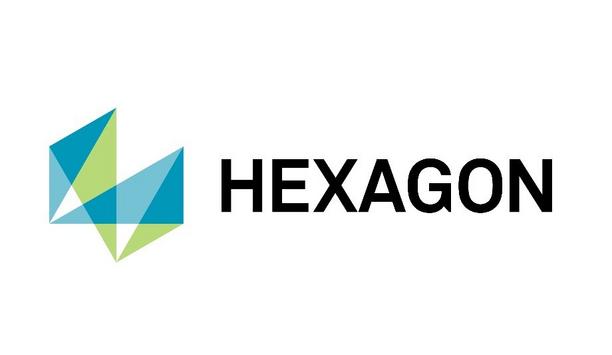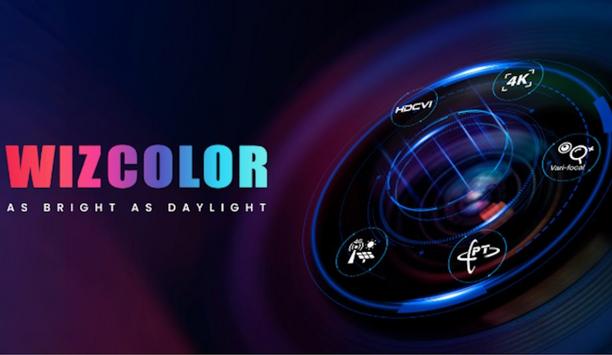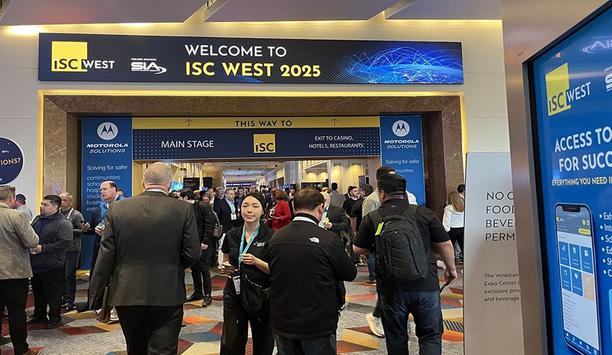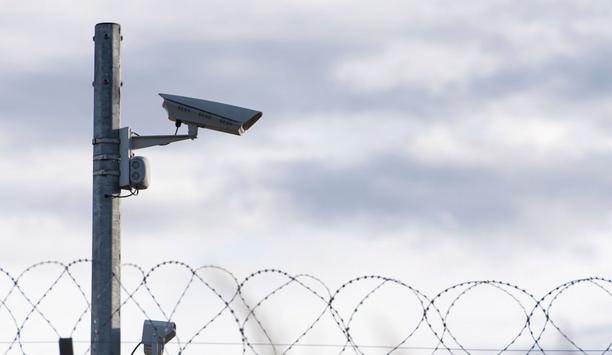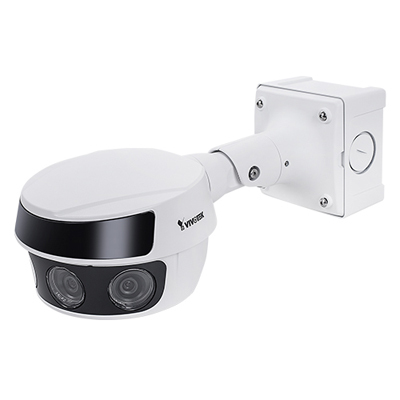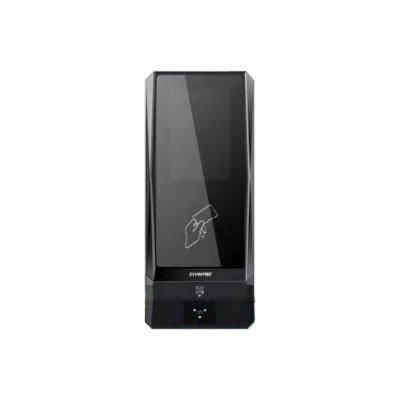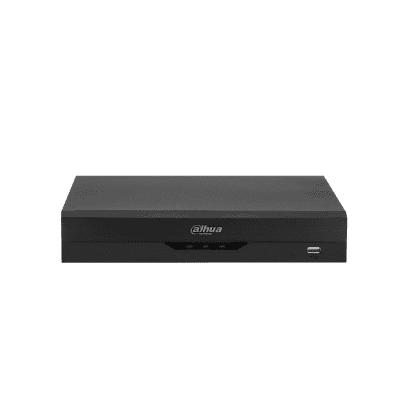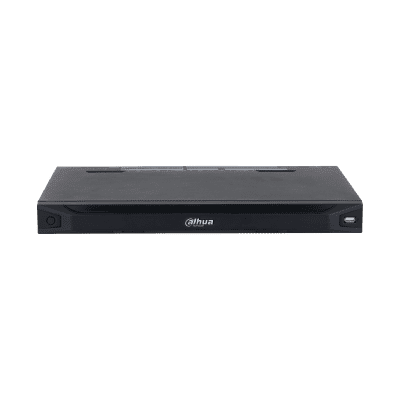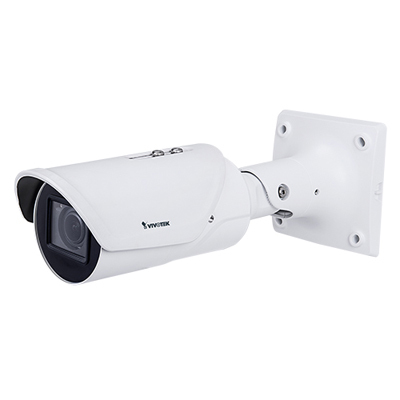Internet of Things (IoT)
CSignum, the pioneering provider of wireless technology extending IoT communications beneath the surface, has completed a £6 million Series A funding round. The investment will accelerate growth of its EM-2 family of products which are transforming the way critical wireless sensor data is transmitted from submerged environments to networks above. CSignum to expand its presence New investment enables CSignum to expand its global presence, accelerate product development The funding round...
Nanodems, a pioneering provider of Physical Security Information Management (PSIM) software, proudly presented its latest innovations at the ISC West 2025, drawing strong interest from security professionals, integrators, and enterprise customers. At this year’s event, Nanodems showcased two game-changing features of its critical event management platform: AI-Powered Health Check and security-focused digital twins, both designed to revolutionise the way organisations monitor and manage co...
According to a recent report by Verified Market Research, the Forklift Camera Systems Market is projected to grow from USD 500 million in 2023 to USD 2.4 billion by 2030, expanding at a CAGR of 16.8% over the forecast period (2024–2030). This growth is attributed to rising safety standards, regulatory compliance, and the need for improved operational efficiency across global industrial environments. Advanced forklift camera systems SharpEagle Technology, a provider of forklift safety ke...
Axis Communications, the industry pioneer in video surveillance, has released its latest research report, ‘The State of AI in Video Surveillance,’ which explores global industry perspectives on the use of AI in the security industry and beyond. The report reveals current attitudes on AI technologies thanks to in-depth interviews with AI experts from Axis’ global network and a comprehensive survey of more than 5,800 respondents, including distributors, channel partners, and end...
GOST® (Global Ocean Security Technologies), a world pioneer in marine security, tracking, monitoring and video surveillance systems, announced strategic company restructuring and leadership changes to better serve its customers and further expand the company’s reach around the world. GOST founder and Chief Technology Officer, Brian Kane will now lead the company as President and Chief Executive Officer, effective immediately. This new appointment comes as Jay Keenan transitions to the...
With the recent update of its Document Reader SDK, Regula became the first identity verification (IDV) vendor to make it possible to verify all the dynamic security features of documents in real time. With the latest addition of Dynaprint® checks, the solution ensures more robust physical document authentication during remote onboarding. The innovation has arrived at a time when 58% of businesses globally face fake or modified IDs during digital onboarding. Dynamic se...
News
The Physical Security Interoperability Alliance (PSIA) hosted a well-attended cocktail reception and live demonstration during ISC West 2025 to unveil its latest advancement: the PKOC 3.0 specification, an exciting solution for secure, open credentialing in physical access control systems. Jason Ouellette, Chairman of the PSIA and Corporate VP of Innovation and Technical Partnerships at ELATEC, led the presentation. He shared an overview of PKOC’s progress, key developments in the 3.0 release, and demonstrated a range of interoperable devices—including readers, cards, and mobile applications, built on the freely available, non-proprietary PKOC specification. Broad industry collaboration This year’s demonstration highlighted broad industry collaboration, with support and technologies provided by PSIA member companies including: ELATEC, EMSI, INID Readers USA, Johnson Controls, Kastle Systems, Last Lock, rf IDEAS, Sentry Enterprises, Taglio, and Universal Smart Card. There is a growing list of manufacturers actively supporting the PKOC specification, but these 10 companies showcased products at the event, highlighting its interoperability and real-world applications. Deloitte’s own proof-of-concept The project features PKOC certificates working seamlessly across readers, physical cards, and mobile devices At the reception, Jeff Longo, Director of Software Development at Kastle Systems, announced that the company will officially make the PKOC card its standard card offering—further solidifying its commitment to open, secure, and interoperable access control solutions. Keith Kelly, Chief Security Officer at Deloitte Canada, shared insights from Deloitte’s own proof-of-concept implementation of PKOC at its Toronto office. The project features PKOC credentials functioning seamlessly across readers, physical cards, and mobile devices. Kelly emphasised that PKOC represents “a new generation of access control,” aligned with Deloitte’s priorities around open, flexible, and secure credentialing. Simplicity, security, and scalability David Bunzel, Executive Director of the PSIA, noted, “PKOC is widely recognised as one of the most exciting solutions for secure credentials. Because it is based on an open specification, it is cost-effective—but just as important, it is secure and highly flexible.” Unlike many legacy credential technologies, PKOC is completely open source, with no fees, royalties, or membership requirements. Its simplicity, security, and scalability are fuelling growing interest across integrators, manufacturers, and enterprise users.
Hikvision has achieved two prestigious international certifications: ETSI EN 303 645 and EN 18031. The certifications were awarded by Bureau Veritas, a globally renowned third-party inspection, testing and certification organisation. This achievement underscores Hikvision’s commitment to security and compliance in its IoT products. ETSI EN 303 645 certification ETSI EN 303 645 certification is a European standard focused on the security of IoT devices The ETSI EN 303 645 certification is a European standard focused on the security of consumer IoT devices. Obtaining this certification validates that a company's IoT products meet international standards in terms of privacy protection and data security, demonstrating their capability to create a safer IoT environment for users. EN 18031 certification The EN 18031 certification standard was developed by the Joint Technical Committee CEN-CENELEC JTC 13, Working Group 8 (WG8), which specialises in cybersecurity and data protection. The primary objective of this standard is to strengthen radio equipment's capability to protect security, network, privacy, and financial assets from common cybersecurity threats while mitigating known exploitable vulnerabilities. Hikvision security capabilities Hikvision has partnered with the Secura laboratory to jointly advance international certification In addition, Hikvision has partnered with the Netherlands-based Secura laboratory to jointly advance international certification cooperation related to the standards EN 303 645, EN 18031, and IEC 62443. The collaboration focuses on product security development processes, standardising the security requirements of IoT devices, and ensuring data security in radio equipment. By deepening cooperation in global security standards, Hikvision continues to enhance the security capabilities of its products provide global users with safer and more reliable intelligent security solutions. Smart IoT applications Leveraging its technical expertise and in-depth industry understanding in IoT perception and artificial intelligence, Hikvision has innovatively expanded its smart IoT applications. Multiple cybersecurity technologies developed by Hikvision have earned national-level scientific and technological innovation awards. Looking ahead, Hikvision remains committed to strengthening the construction of the security operations system, ensuring that every link complies with industry security standards, and contributes to the development of a secure ecosystem.
Hexagon AB announced an agreement to acquire the Unified Communications Radio Suite (UCRS) software assets of CONET Communications GmbH (CCOM), part of CONET Group, to complement its public safety platform. UCRS is a high-performance communication solution for control centres capable of integrating diverse channels such as Private Branch Exchange (PBX) and mobile phone networks, digital radio, business information systems, public address systems, video surveillance (CCTV), video conferencing, and satellite communication infrastructures. Hexagon's public safety platform Successful customers such as the Kassel Fire Brigade already benefit from the combined Hexagon Combining UCRS with Hexagon's public safety platform will provide agencies with a fully integrated command-and-control solution from one vendor. Successful customers such as the Kassel Fire Brigade already benefit from the combined Hexagon and CONET offering. “Seamless communication is an essential part of emergency response. Public safety agencies must be able to communicate with responders in a variety of ways, making the addition of CCOM’s product suite a natural extension of Hexagon’s technology stack,” said Norbert Hanke, interim President and CEO, Hexagon. “This acquisition strengthens our ability to serve public safety customers today while accelerating innovation for the future.” CCOM’s UCRS solution CCOM’s UCRS solution, supported by around 50 employees, will be reported within Hexagon's Safety, Infrastructure & Geospatial division and is expected to generate revenues of around ~10 MEUR in 2025 with margins similar to SIG averages. Completion of the transaction is subject to regulatory approvals and other customary conditions and is expected to be finalised by the end of Q2 2025.
Dahua Technology, a world-pioneering video-centric AIoT solution and service provider, proudly released the newest addition to its WizColor product offerings. Equipped with an artillery of intelligent functions tailored to meet the needs of various scenarios, the WizColor technology expands its capabilities with five innovative categories: WizColor + 4K, WizColor + PT, WizColor + Vari-focal, WizColor + HDCVI, and WizColor + 4G. WizColor + 4K: Brilliant nights, clear details The WizColor technology, combined with 4K resolution, ensures that all elements remain sharp and well-defined when enlarged, preserving fine details while enhancing both visual quality and viewer engagement. It offers 4K resolution with enhanced detail preservation, superior nighttime clarity with minimised image noise and blur, and AI-ISP optimisation for vivid and natural image colours. WizColor + PT: No blind spots at night PT camera secures all-round guard with its multi-directional monitoring and flexible PT abilities Equipped with WizColor technology, the PT camera ensures all-round security with its multi-directional monitoring and flexible PT adjustment capabilities, making it ideal for various SMB surveillance needs. It provides 360° all-around surveillance, versatility with various application scenarios, and dual lenses in one single camera. WizColor + Vari-focal: See farther at night These vari-focal cameras with WizColor technology effectively solves the issue of blurry details in full-color cameras at night. Its zoom capability enables clear visibility of distant details even in low-light environment. Aside from clear image details at night, these products also offer a comprehensive surveillance of both panoramic and detail views, as well as adjustable focal length to change the camera’s field of view, enabling a single-lens camera to monitor multiple areas effectively and improving surveillance efficiency. WizColor + HDCVI: See beyond the night, powered by HDCVI HDCVI technology enables long-distance HD video dispatch over a wide range of application scenarios The High Definition Composite Video Interface (HDCVI) technology enables long-distance HD video transmission over a wide range of application scenarios at a budget-friendly cost. Aside from enhanced color and low-light performance, the integration of HDCVI technology with WizColor also provides users with other monitoring benefits. It supports dual mic technology that significantly improves audio clarity and pickup distance, ensuring the authenticity and reliability of the collected audio information. It is also equipped with LDC technology that corrects the overall image distortion to make the monitored scene consistent with the real scene. WizColor + 4G: 4G connected. Unlimited runtime, day and night For 4G battery-powered cameras, the activation of supplementary lights at night is undoubtedly wasteful of energy and contributes to light pollution. The WizColor technology eliminates the need for additional illumination in the monitored scene during nighttime, thereby extending the device's operational longevity and fostering a more environmentally friendly approach to surveillance.
Kaseya, the pioneering provider of AI-powered cybersecurity and IT management software, has announced its Spring 2025 release with new features that equips MSPs and internal IT teams with new capabilities to automate workflows, enhance the end-user experience, and strengthen security posture ahead of Kaseya Connect, where the company will debut the latest evolution of Kaseya 365. “Innovation is not just part of our roadmap — it’s embedded in our DNA,” said Jim Lippie, Chief Product Officer at Kaseya. “Each enhancement in this release is a direct response to the evolving needs of our customers, enabling them to work more efficiently, securely and profitably.” Highlights from the Spring 2025 release Automated SOP Creation (IT Glue): Cooper Copilot now generates step-by-step SOPs in real-time, streamlining documentation and reducing manual effort. Self-Service Billing Control (KaseyaOne): Customers can now manage payment methods and autopay preferences directly, gaining full visibility and control of their subscriptions. One-Click DR Cleanup (Datto BCDR): Instantly clear active recovery resources in Datto Cloud to optimise infrastructure and boost restore performance. Secure, Seamless Network Access (Datto Networking + Datto RMM): SafeCheck enables quick, multifactor-authenticated endpoint access without enterprise-level complexity. Multilingual AI Support (BMS and Vorex): Cooper Copilot auto-detects user language preferences, enabling natural, fluent communication across global teams. Version-Specific File Restore (Datto Endpoint Backup): Restore exactly the file version you need, faster—thanks to a streamlined multi-version restore experience. These innovations, and many others, are featured on Kaseya’s Spring 2025 Innovations page.
Everon, a pioneering security integrator and premier provider of commercial security, video, fire and life safety solutions in the U.S., announced the promotion of Chris Heugle to Senior Vice President, Commercial Sales & Integrated Solutions, and Greg Mastroserio to Vice President, Commercial & Integrated Solutions Sales to lead companywide strategic sales initiatives. With nearly 20 years of industry experience, Heugle will now oversee Everon’s overarching sales strategy, bringing a proven track record of enterprise leadership and a deep understanding of customer needs. This includes extensive experience with trusted security providers, including Access Systems Integration, ADT Commercial, and more. Prior roles of Heugle Heugle will focus on driving sales growth, enhancing the customer experience in every interaction In his most recent role as Vice President, Integrated Solutions for Everon, he was instrumental in aligning the company’s Integrated Solutions team with sales and support functions to address some of the most complex challenges faced by customers. In his new role, Heugle will focus on driving sales growth, enhancing the customer experience in every interaction and elevating Everon’s positioning in the commercial and integrated solutions space. Everon’s commercial and integrated solutions Mastroserio, who also brings two decades of industry expertise – including roles at Deterrent Technologies, Schneider Electric, and ADT Commercial – has consistently driven growth and customer success in sales leadership positions. As Vice President, Commercial & Integrated Solutions Sales, Mastroserio will lead strategic sales initiatives for the organisation, further expanding Everon’s commercial and integrated solutions offerings while driving exceptional results for customers. Everon’s customer partnerships Heugle and Mastroserio drove success across their joint decades of experience giving enterprise solutions Heugle and Mastroserio drove success across their collective decades of experience delivering enterprise solutions for some of the industry’s most complex integration projects, including large-scale data centres, healthcare systems, national retailers, and more. Their wide-ranging expertise will help to extend the value of Everon’s customer partnerships and deliver quality, tech-forward solutions to commercial environments across industries. Everon’s position as a trusted partner “Appointing proven industry pioneers like Chris and Greg reflects our ongoing commitment to delivering greater value to our customers, beginning with and extending well beyond the sales process,” said Mike McWilliams, President and Chief Operating Officer of Everon. “Their customer-centric approach and technical expertise ensures that we continue to provide seamless, high-quality solutions throughout every stage of the customer journey. Their leadership will reinforce Everon’s position as a trusted partner for businesses nationwide.”
The Physical Security Interoperability Alliance (PSIA) hosted a well-attended cocktail reception and live demonstration during ISC West 2025 to unveil its latest advancement: the PKOC 3.0 specification, an exciting solution for secure, open credentialing in physical access control systems. Jason Ouellette, Chairman of the PSIA and Corporate VP of Innovation and Technical Partnerships at ELATEC, led the presentation. He shared an overview of PKOC’s progress, key developments in the 3.0 release, and demonstrated a range of interoperable devices—including readers, cards, and mobile applications, built on the freely available, non-proprietary PKOC specification. Broad industry collaboration This year’s demonstration highlighted broad industry collaboration, with support and technologies provided by PSIA member companies including: ELATEC, EMSI, INID Readers USA, Johnson Controls, Kastle Systems, Last Lock, rf IDEAS, Sentry Enterprises, Taglio, and Universal Smart Card. There is a growing list of manufacturers actively supporting the PKOC specification, but these 10 companies showcased products at the event, highlighting its interoperability and real-world applications. Deloitte’s own proof-of-concept The project features PKOC certificates working seamlessly across readers, physical cards, and mobile devices At the reception, Jeff Longo, Director of Software Development at Kastle Systems, announced that the company will officially make the PKOC card its standard card offering—further solidifying its commitment to open, secure, and interoperable access control solutions. Keith Kelly, Chief Security Officer at Deloitte Canada, shared insights from Deloitte’s own proof-of-concept implementation of PKOC at its Toronto office. The project features PKOC credentials functioning seamlessly across readers, physical cards, and mobile devices. Kelly emphasised that PKOC represents “a new generation of access control,” aligned with Deloitte’s priorities around open, flexible, and secure credentialing. Simplicity, security, and scalability David Bunzel, Executive Director of the PSIA, noted, “PKOC is widely recognised as one of the most exciting solutions for secure credentials. Because it is based on an open specification, it is cost-effective—but just as important, it is secure and highly flexible.” Unlike many legacy credential technologies, PKOC is completely open source, with no fees, royalties, or membership requirements. Its simplicity, security, and scalability are fuelling growing interest across integrators, manufacturers, and enterprise users.
Hikvision has achieved two prestigious international certifications: ETSI EN 303 645 and EN 18031. The certifications were awarded by Bureau Veritas, a globally renowned third-party inspection, testing and certification organisation. This achievement underscores Hikvision’s commitment to security and compliance in its IoT products. ETSI EN 303 645 certification ETSI EN 303 645 certification is a European standard focused on the security of IoT devices The ETSI EN 303 645 certification is a European standard focused on the security of consumer IoT devices. Obtaining this certification validates that a company's IoT products meet international standards in terms of privacy protection and data security, demonstrating their capability to create a safer IoT environment for users. EN 18031 certification The EN 18031 certification standard was developed by the Joint Technical Committee CEN-CENELEC JTC 13, Working Group 8 (WG8), which specialises in cybersecurity and data protection. The primary objective of this standard is to strengthen radio equipment's capability to protect security, network, privacy, and financial assets from common cybersecurity threats while mitigating known exploitable vulnerabilities. Hikvision security capabilities Hikvision has partnered with the Secura laboratory to jointly advance international certification In addition, Hikvision has partnered with the Netherlands-based Secura laboratory to jointly advance international certification cooperation related to the standards EN 303 645, EN 18031, and IEC 62443. The collaboration focuses on product security development processes, standardising the security requirements of IoT devices, and ensuring data security in radio equipment. By deepening cooperation in global security standards, Hikvision continues to enhance the security capabilities of its products provide global users with safer and more reliable intelligent security solutions. Smart IoT applications Leveraging its technical expertise and in-depth industry understanding in IoT perception and artificial intelligence, Hikvision has innovatively expanded its smart IoT applications. Multiple cybersecurity technologies developed by Hikvision have earned national-level scientific and technological innovation awards. Looking ahead, Hikvision remains committed to strengthening the construction of the security operations system, ensuring that every link complies with industry security standards, and contributes to the development of a secure ecosystem.
Hexagon AB announced an agreement to acquire the Unified Communications Radio Suite (UCRS) software assets of CONET Communications GmbH (CCOM), part of CONET Group, to complement its public safety platform. UCRS is a high-performance communication solution for control centres capable of integrating diverse channels such as Private Branch Exchange (PBX) and mobile phone networks, digital radio, business information systems, public address systems, video surveillance (CCTV), video conferencing, and satellite communication infrastructures. Hexagon's public safety platform Successful customers such as the Kassel Fire Brigade already benefit from the combined Hexagon Combining UCRS with Hexagon's public safety platform will provide agencies with a fully integrated command-and-control solution from one vendor. Successful customers such as the Kassel Fire Brigade already benefit from the combined Hexagon and CONET offering. “Seamless communication is an essential part of emergency response. Public safety agencies must be able to communicate with responders in a variety of ways, making the addition of CCOM’s product suite a natural extension of Hexagon’s technology stack,” said Norbert Hanke, interim President and CEO, Hexagon. “This acquisition strengthens our ability to serve public safety customers today while accelerating innovation for the future.” CCOM’s UCRS solution CCOM’s UCRS solution, supported by around 50 employees, will be reported within Hexagon's Safety, Infrastructure & Geospatial division and is expected to generate revenues of around ~10 MEUR in 2025 with margins similar to SIG averages. Completion of the transaction is subject to regulatory approvals and other customary conditions and is expected to be finalised by the end of Q2 2025.
Dahua Technology, a world-pioneering video-centric AIoT solution and service provider, proudly released the newest addition to its WizColor product offerings. Equipped with an artillery of intelligent functions tailored to meet the needs of various scenarios, the WizColor technology expands its capabilities with five innovative categories: WizColor + 4K, WizColor + PT, WizColor + Vari-focal, WizColor + HDCVI, and WizColor + 4G. WizColor + 4K: Brilliant nights, clear details The WizColor technology, combined with 4K resolution, ensures that all elements remain sharp and well-defined when enlarged, preserving fine details while enhancing both visual quality and viewer engagement. It offers 4K resolution with enhanced detail preservation, superior nighttime clarity with minimised image noise and blur, and AI-ISP optimisation for vivid and natural image colours. WizColor + PT: No blind spots at night PT camera secures all-round guard with its multi-directional monitoring and flexible PT abilities Equipped with WizColor technology, the PT camera ensures all-round security with its multi-directional monitoring and flexible PT adjustment capabilities, making it ideal for various SMB surveillance needs. It provides 360° all-around surveillance, versatility with various application scenarios, and dual lenses in one single camera. WizColor + Vari-focal: See farther at night These vari-focal cameras with WizColor technology effectively solves the issue of blurry details in full-color cameras at night. Its zoom capability enables clear visibility of distant details even in low-light environment. Aside from clear image details at night, these products also offer a comprehensive surveillance of both panoramic and detail views, as well as adjustable focal length to change the camera’s field of view, enabling a single-lens camera to monitor multiple areas effectively and improving surveillance efficiency. WizColor + HDCVI: See beyond the night, powered by HDCVI HDCVI technology enables long-distance HD video dispatch over a wide range of application scenarios The High Definition Composite Video Interface (HDCVI) technology enables long-distance HD video transmission over a wide range of application scenarios at a budget-friendly cost. Aside from enhanced color and low-light performance, the integration of HDCVI technology with WizColor also provides users with other monitoring benefits. It supports dual mic technology that significantly improves audio clarity and pickup distance, ensuring the authenticity and reliability of the collected audio information. It is also equipped with LDC technology that corrects the overall image distortion to make the monitored scene consistent with the real scene. WizColor + 4G: 4G connected. Unlimited runtime, day and night For 4G battery-powered cameras, the activation of supplementary lights at night is undoubtedly wasteful of energy and contributes to light pollution. The WizColor technology eliminates the need for additional illumination in the monitored scene during nighttime, thereby extending the device's operational longevity and fostering a more environmentally friendly approach to surveillance.
Kaseya, the pioneering provider of AI-powered cybersecurity and IT management software, has announced its Spring 2025 release with new features that equips MSPs and internal IT teams with new capabilities to automate workflows, enhance the end-user experience, and strengthen security posture ahead of Kaseya Connect, where the company will debut the latest evolution of Kaseya 365. “Innovation is not just part of our roadmap — it’s embedded in our DNA,” said Jim Lippie, Chief Product Officer at Kaseya. “Each enhancement in this release is a direct response to the evolving needs of our customers, enabling them to work more efficiently, securely and profitably.” Highlights from the Spring 2025 release Automated SOP Creation (IT Glue): Cooper Copilot now generates step-by-step SOPs in real-time, streamlining documentation and reducing manual effort. Self-Service Billing Control (KaseyaOne): Customers can now manage payment methods and autopay preferences directly, gaining full visibility and control of their subscriptions. One-Click DR Cleanup (Datto BCDR): Instantly clear active recovery resources in Datto Cloud to optimise infrastructure and boost restore performance. Secure, Seamless Network Access (Datto Networking + Datto RMM): SafeCheck enables quick, multifactor-authenticated endpoint access without enterprise-level complexity. Multilingual AI Support (BMS and Vorex): Cooper Copilot auto-detects user language preferences, enabling natural, fluent communication across global teams. Version-Specific File Restore (Datto Endpoint Backup): Restore exactly the file version you need, faster—thanks to a streamlined multi-version restore experience. These innovations, and many others, are featured on Kaseya’s Spring 2025 Innovations page.
Everon, a pioneering security integrator and premier provider of commercial security, video, fire and life safety solutions in the U.S., announced the promotion of Chris Heugle to Senior Vice President, Commercial Sales & Integrated Solutions, and Greg Mastroserio to Vice President, Commercial & Integrated Solutions Sales to lead companywide strategic sales initiatives. With nearly 20 years of industry experience, Heugle will now oversee Everon’s overarching sales strategy, bringing a proven track record of enterprise leadership and a deep understanding of customer needs. This includes extensive experience with trusted security providers, including Access Systems Integration, ADT Commercial, and more. Prior roles of Heugle Heugle will focus on driving sales growth, enhancing the customer experience in every interaction In his most recent role as Vice President, Integrated Solutions for Everon, he was instrumental in aligning the company’s Integrated Solutions team with sales and support functions to address some of the most complex challenges faced by customers. In his new role, Heugle will focus on driving sales growth, enhancing the customer experience in every interaction and elevating Everon’s positioning in the commercial and integrated solutions space. Everon’s commercial and integrated solutions Mastroserio, who also brings two decades of industry expertise – including roles at Deterrent Technologies, Schneider Electric, and ADT Commercial – has consistently driven growth and customer success in sales leadership positions. As Vice President, Commercial & Integrated Solutions Sales, Mastroserio will lead strategic sales initiatives for the organisation, further expanding Everon’s commercial and integrated solutions offerings while driving exceptional results for customers. Everon’s customer partnerships Heugle and Mastroserio drove success across their joint decades of experience giving enterprise solutions Heugle and Mastroserio drove success across their collective decades of experience delivering enterprise solutions for some of the industry’s most complex integration projects, including large-scale data centres, healthcare systems, national retailers, and more. Their wide-ranging expertise will help to extend the value of Everon’s customer partnerships and deliver quality, tech-forward solutions to commercial environments across industries. Everon’s position as a trusted partner “Appointing proven industry pioneers like Chris and Greg reflects our ongoing commitment to delivering greater value to our customers, beginning with and extending well beyond the sales process,” said Mike McWilliams, President and Chief Operating Officer of Everon. “Their customer-centric approach and technical expertise ensures that we continue to provide seamless, high-quality solutions throughout every stage of the customer journey. Their leadership will reinforce Everon’s position as a trusted partner for businesses nationwide.”


Expert commentary
Retailers now often find themself in a precarious situation. Profit margins are being squeezed by widespread shoplifting: The Council on Criminal Justice reports that between the first half of 2023 and the first half of 2024, shoplifting reports increased by 24%. Meanwhile, the strategies used by shops to deal with this situation are alienating consumers and affecting total sales. Andy Jassy, the CEO of Amazon, stated during an earnings call that customers are now purchasing more pharmaceuticals from Amazon in response to other retailers locking their cabinets. Media reports This crisis impacts not only the large chains—more than 7,100 retail stores were closed in the U.S. in 2024, a 69% increase from the previous year—but also small, local businesses, whose profit margins are even narrower. Media reports out of Los Angeles show that small businesses in regions with greater shoplifting rates are more likely to close, and small business owners' job satisfaction and general well-being are negatively impacted by the fear of crime. How to safeguard staff and inventory Unchecked retail theft demoralises staff and makes the store less attractive to customers This is obviously not a sustainable situation. In addition to lowering revenue, unchecked retail theft demoralises staff and makes the store less attractive to customers. Unfortunately, making customers wait in line to enter a store or locking up toothpaste and deodorant only makes the customer relationship worse. Retailers need to figure out how to safeguard staff and inventory without alienating their customer base—and they need to figure it out fast. Advanced video security A new tool has come to the forefront of this fight: advanced video security. Of course, video surveillance has been used in stores for many years. However, the technology currently being used to reduce retail theft is very different from the outdated analog video systems of the past. With features like cloud-based flexibility and AI-enhanced analytics, this new generation of video surveillance systems has all the advantages of modern technological advancements, while also providing businesses with a competitive edge in the fight against retail theft. Security's new AI video standard Workers are constantly rushing from aisle to aisle in an effort to satisfy eager consumers Although the typical chain pharmacy may appear straightforward to the customer, retailers are aware of how intricate these spaces are. Hundreds or even thousands of shoppers may come and go on any given day, with a larger volume during busy seasons like holidays or special promotional events. It's common for shoppers to pick up merchandise and put it down in another part of the store, often far away from its original location. Meanwhile, workers are constantly rushing from aisle to aisle in an effort to satisfy eager consumers, particularly during these busy seasons. How much can recorded videos reveal in a busy Using traditional CCTV, managers and security teams can monitor some of this activity, but their viewpoint of events will always be incomplete. There is a limit to how much recorded videos can reveal in busy, fast-paced customer situations, and even the largest chain stores lack the staff and resources to continuously sort and evaluate all of the data they collect. When more customers are in the store for a special event, there’s also naturally a higher risk of theft. New generation of video security Using machine learning algorithms trained on large amounts of retail-specific data The new generation of video security aims to provide retailers with comprehensive intelligence that covers all aspects of their operations. Using machine learning algorithms trained on large amounts of retail-specific data, they are focused on predictive actions and can recognise problematic behaviour in real time from raw video footage. AI-powered surveillance For example, if someone entered a store with empty bags but bypassed the cashier and started heading to the exit with a full bag, AI could predict a potential theft before it happens. Instead of just recording the theft, security action could be triggered in the moment. AI-powered surveillance is like an all-seeing security officer, quickly analysing the thousands of variables at play and spotting the warning signs of a possible crime before it happens. This is especially crucial during the holidays and busy shopping periods. Security personnel required to monitor cameras Imagine a chain store with 500 locations and 32 cameras each: that’s 1,600 cameras Cameras with AI can also alert human security personnel of events that would have otherwise been missed. Imagine a chain store with 500 locations and 32 cameras each: that’s 1,600 cameras. Now just imagine the number of security personnel required to monitor all of those cameras – when it comes down to it, traditional security is a numbers game. AI is the differentiator here that will allow retailers to win this game. VSaaS: A new tool to Deter Theft The emergence of Video Surveillance as a Service (VSaaS), a surprisingly under-discussed aspect of the broader SaaS revolution, is an important part of video security’s evolution. VSaaS solutions are especially helpful for chains that require a high level of centralisation and coordination across hundreds or even thousands of locations. In addition to offering action alerts at the shop level, VSaaS offers comprehensive security systems accessible from any location. This gives corporate headquarters access to complete, aggregated insights on all aspects of business operations. Identify the best ways to deploy staff Retail operators are constantly in a state of triage, rushing to identify the best ways to deploy staff This is significant in part because of the importance that social engineering and store layout have in preventing theft. Stores are frequently more busy during specific hours than others, and consumers may congregate in particular areas of the store while others are comparatively empty. Retail operators are constantly in a state of triage, rushing to identify the best ways to deploy staff and organise inventory while accounting for all of these variables. Cloud-based VSaaS solutions Cloud-based VSaaS solutions help streamline this process by eliminating uncertainty, highlighting blind spots and bottlenecks, and informing retailers of what truly works. Another regrettable reality is that employees frequently steal from businesses they work at. Here, too, VSaaS solutions—when combined with sophisticated, integrated access controls—are essential. AI analytics technology Implementation and deployment of VSaaS is also easier and less costly than CCTV Implementation and deployment of VSaaS is also easier and less costly than CCTV. When new AI analytic updates become available, the client software and hardware don’t need to be upgraded, and the onsite technology and cameras also don’t need to be replaced. The AI analytics technology is upgraded in the cloud, enabling faster deployment and implementation of new technology. New VSaaS solutions Theft will always occur at some level; it's just a part of doing business. However, the growth in shoplifting that retailers have experienced in recent years is unacceptable, and if these figures keep rising, the consequences will be disastrous. In a time of dire need for retail, new VSaaS solutions have come to the forefront and are already turning the tide.
March is Women in Security Month, a time dedicated to celebrating and promoting the contributions of women in the security field—particularly in cybersecurity. This observance aligns with Women’s History Month, providing an opportunity to reflect on the progress made and the work still needed to advance gender equity in security. Evolving role of women in security The security industry has witnessed a steady increase in women's participation. According to ISC2 Research in its “Women’s Role in Filling the Workforce Gap” report, women make up an estimated 20 to 25 percent of the security industry. Promisingly, younger generations are entering the profession at higher rates, with 26 percent of working professionals under 30 identifying as women. The security industry has witnessed a steady increase in women's participation The research tells us that women are thriving in a variety of roles, from engineering and system administration to sales, marketing, and project leadership. Key factors driving this transformation include mentorship programs, male allies advocating for gender equality, and cultural shifts recognising the unique perspectives and strengths women bring to security challenges. These efforts are fostering more inclusive environments and ultimately strengthening the industry. The value of diverse perspectives in security Security is not a one-size-fits-all industry—each organisation and facility has unique needs that require varied perspectives. Greater representation of women has introduced fresh approaches to problem-solving, fostering collaboration and driving innovation. By integrating diverse viewpoints, security professionals can create more effective solutions that better address end-user needs. Industry support for women’s professional growth SIA's WISF offers subcommittees such as NavigateHER, SupportHER, and UpLiftHER Organisations like the Security Industry Association (SIA) and ASIS International have established networking platforms and initiatives to support women in security. Events such as the Security LeadHER Conference provide valuable professional development and networking opportunities. Companies are also investing in science, technology, engineering, and mathematics (STEM) initiatives, hands-on training, and recruitment programs to attract more women into the field. Additionally, SIA's Women in Security Forum (WISF) offers subcommittees such as NavigateHER, SupportHER, and UpLiftHER, which provide pathways for engagement and growth. Challenges women in security face Despite progress, challenges remain. Many women still feel it necessary to repeatedly prove their expertise, take on additional informal responsibilities, or carefully navigate workplace dynamics. Imposter syndrome can be another hurdle, even for accomplished professionals. However, women in security are addressing these challenges by setting boundaries, advocating for themselves, and supporting one another through mentorship. By excelling in leadership and technical roles, women are reshaping outdated perceptions and advocating for more inclusive workplace policies. Steps industry pioneers can take To further support women in security, industry pioneers could: Provide targeted professional development and career advancement opportunities. Foster strong, supportive communities that recognise and mentor women. Implement structured mentorship programs that connect experienced professionals with newcomers. Promote workplace flexibility to help employees balance personal and career commitments. Actively challenge biases and advocate for meaningful change within organisations. Advice for women entering the security field Here are key pieces of advice for women considering a career in security: Own Your Expertise – Have confidence in your knowledge and skills. Seek Out Mentors & Allies – Connect with supportive professionals who can guide your career. Build a Strong Network – Join organisations like ASIS Women in Security, SIA Women in Security Forum, or Women in CyberSecurity (WiCyS), and attend industry events to expand your connections. Speak Up & Take Space – Confidently share your ideas and challenge outdated norms. Develop Resilience & Advocate for Yourself – Push past biases, demand the respect you deserve, and negotiate for fair salaries and promotions. Keep Learning & Stay Ahead – Continually build your expertise to stay competitive in the evolving security industry. The future of women in security As the security industry evolves with technological advancements and global changes, opportunities for women will continue to expand. Women are not just participating in the industry’s growth—they are shaping its future. With growing mentorship programs, male allies advocating for gender equality, and ongoing cultural shifts, the focus is no longer just on breaking barriers but on building bridges to new opportunities.
Technology advances in the security industry are transforming the way modern systems are designed and installed. Customers today are looking for greater scalability and flexibility, lower up-front costs, and operational efficiency. Cloud-based software as a service (SaaS) solutions, AI-enhanced tools, and IoT-enabled sensors and devices are increasingly in demand. The traditional role of the systems integrator is evolving as a result. While security integrators have always worked closely with end users, today’s pioneers go beyond installation and maintenance. They align security strategies with evolving business needs, integrating IT, cybersecurity, and data-driven insights into their offerings. A look at the past and present Integrators are often asked to help tailor solutions and provide expertise in IT and cybersecurity Traditionally, systems integrators specialised in installing and maintaining wired physical security systems like CCTV, access control, and alarms. The service model was built around large, up-front investments and project-based installations. However, today customers are seeking comprehensive solutions. They’re looking to wirelessly integrate security infrastructure with cloud-based SaaS systems and IoT devices. While modern systems are often faster to deploy, they’re most effective when supported by ongoing consulting and strategic planning. Integrators are often asked to help tailor solutions and provide expertise in IT and cybersecurity. Data requirements and modern systems Data requirements have also changed. Modern systems collect vast amounts of data. Advanced analytics, machine learning, and automation are now must-have tools for actionable insights. Security integrators can help end users set up custom dashboards, automations, and continuous system optimisation. Let’s look at some of the specific ways the role of systems integrators is evolving and how to adapt and succeed. Strengthen your IT expertise Integrators with IT expertise can ensure that hardware is optimised and maintained for peak performance The competitive landscape today includes not just security specialists but also IT-focused integrators and SaaS providers. Systems integrators with expertise in traditional physical security solutions plus IT experience offer unique value. They understand the real-world security challenges and opportunities, along with cybersecurity and network best practices. Integrators with IT expertise can also ensure that hardware is optimised and maintained for peak performance. Their experience with legacy systems allows them to offer practical recommendations on cost-effective approaches, such as upgrading or integrating older hardware with new digital solutions. Consider who’s making the purchase decisions Traditionally, security integrators primarily sold to security directors, facility managers, and operations teams. Now, multiple stakeholders may be involved in decision-making. IT teams, CIOs, and CTOs often weigh in on purchase decisions when cloud-based security and SaaS solutions are under consideration. Customers today aren’t just shopping for cameras, access control panels, alarms, and other hardware components. They’re looking for security ecosystems that can integrate with enterprise-wide IT infrastructure and business applications. When working with these different teams, consider outlining the system's return on investment (ROI). How can the solution reduce risk for various departments? Can it help improve operational efficiency or reduce the time required to onboard and train staff? Will it make regulatory compliance easier to manage? Focus on the long-term value for the entire organisation. Take a consultative approach Another way systems integrators are adding value is by offering vertical specialisation Installation fees remain important for many integrators, but there may be additional consultative opportunities to build long-term relationships with customers. Offer services such as roadmap planning, hardware and integration maintenance, training to certify end users on the manufacturer’s product, and cybersecurity services. While cloud-based solutions reduce on-premises maintenance, they don’t eliminate the need for ongoing support and training. Consider offering training opportunities. These can lead to other benefits as well. Better-educated and technically proficient customers are usually more willing to adopt new technologies. They understand the value of these investments and have more confidence that they’ll see results. Another way systems integrators are adding value is by offering vertical specialisation. Healthcare, sports venues, critical infrastructure, education, retail - each specialty has its own set of challenges, partner networks, regulatory restrictions, training needs, and business requirements. Integrators who specialise are uniquely positioned to offer key sector-specific insights that are invaluable to their clients. Embrace the cloud A key growth area for integrators is supporting customers in their shift to cloud deployments. Cloud solutions aren’t a one-size-fits-all solution. Each organisation is evaluating options and deciding whether cloud, hybrid, or fully on-prem solutions are the right fit for its unique needs. A key growth area for integrators is helping clients in their shift to cloud deployments Helping customers navigate and adopt cloud or hybrid solutions opens new opportunities to expand your business and deepen your relationship with your customers. Systems integrators who sell cloud solutions have the opportunity to add new layers to services for more value for customers. With a cloud solution that's easy and fast to deploy and managed and maintained by the provider, you can reduce overhead costs, staff training, and truck rolls via remote customer support. These benefits also allow you to spend time developing greater expertise in your customers’ processes. Using this knowledge, you can tailor your services towards potential productivity gains for your customers and turn them into additional sales. You ensure that your customers get the most out of the technology that’s available and that they have already purchased. Highlight your focus on cybersecurity Cybersecurity is no longer solely an IT department's responsibility. While dedicated IT security teams may still handle broader network defense, integrators play a crucial role in securing access control, surveillance, and IoT devices within a security framework. If unsecured, these devices can provide an entry point for cyber criminals to gain access to an organisation’s network. Cybersecurity is no longer solely an IT department's responsibility To best protect end users from cyberattacks, choose physical security systems with built-in security and privacy-by-design features. Help customers implement best practices to ensure their entire ecosystem is designed, built, and managed with end-to-end security in mind. Once implemented, work with your manufacturers, consultants, and end users to ensure that vulnerabilities are identified and mitigated. Every person on the network plays a role in keeping cyber threats at bay. Lean into the power of partnerships In today’s complex and dynamic security landscape, choosing the right technology partners is crucial. Ask potential partners to share their technology roadmap, and how you can offer feedback or participate in discussions about industry trends. Ideally, your partners will have a program in place to get input from integrators and end users, so they can develop products that are designed to address their most pressing issues and concerns. Your manufacturer partners should be working to help identify the evolving needs of customers and communicate these insights to systems integrators. Seek partners who actively support integrators to understand how security is evolving In addition to a good experience for the end user, strong manufacturer partners also offer solutions to streamline and automate workflows for integrators. It should be easy to order and check your shipping statuses online, for example. These are simple things that save you time and demonstrate your partner’s care for your business. Seek partners who actively support integrators to understand how security is evolving. While training is often offered on-site, some companies are now also offering blended learning models so integrators and their technicians can reduce classroom time and stay out in the field. Evolution is an opportunity Security integrators with traditional physical security expertise remain indispensable because they understand real-world risks and regulatory requirements. They can provide hands-on system deployment and optimisation. Now, there are new opportunities to build long term customer relationships. As the physical security industry undergoes this profound shift, adaptation is key. By embracing cloud and hybrid solutions, integrators can unlock new revenue streams, enhance customer relationships, and stay ahead of technological advancements. With the right partnerships and a forward-thinking mindset, systems integrators can navigate this transformation and take advantage of new opportunities being presented by evolving technology. Leverage your deep industry experience while upskilling in cloud, cybersecurity, and IT. The strongest approach is for end users, systems integrators, IT specialists, and manufacturers to work together to navigate industry changes.
Security beat
For all the emphasis on cloud systems and centralised servers at ISC West, a lot of innovation in security video systems is happening at the edge. New advancements inside video cameras are boosting capabilities at the edge, from advancements in processing power to artificial intelligence (AI) and machine learning (ML) algorithms that can now be deployed directly on the cameras or edge devices. Advancements in AI algorithms The progress of video systems becoming smarter at the edge is driven by the need for real-time insights, lower latency, bandwidth efficiency, enhanced privacy, and improved reliability. Advancements in edge computing hardware and AI algorithms are enabling a range of intelligent video applications across various industries, including physical security. Smarter functionality at the edge is a benefit of new computer systems-on-chips (SoCs) that are driving new heights of performance for today’s cameras. Axis Communications’ ARTPEC-9 Axis Communications’ new ARTPEC-9 SoC offers advanced video compression to reduce bandwidth Axis Communication’s new ARTPEC-9 system-on-chip (SoC) offers advanced video compression to reduce bandwidth and storage needs. With a low bitrate, the SoC helps deliver high-quality imaging with outstanding forensic detail. ARTPEC-9 also offers enhanced deep learning capabilities to allow users to leverage the latest video analytics and accelerate the implementation of AI technology. Axis maintains control over all aspects of the chip’s development to ensure high quality and cybersecurity. Among the benefits of ARTPEC-9 are better AI and deep learning, better image quality, better cybersecurity, and AV1 license-free video compression (see below). Hanwha Vision’s Wisenet 9 Hanwha Vision has launched Wisenet 9, its most advanced AI-powered System on Chip (SoC). Wisenet 9’s enhanced edge AI capabilities increase performance as the volume and complexity of security threats demand real-time, accurate analysis. By elevating edge-device performance, AI empowers systems to quickly analyse vast amounts of video data and discern crucial patterns and anomalies. A key differentiator driving Wisenet 9 is deployment of two Neural Processing Units (NPUs), which improve performance three-fold compared to Wisenet 7, the previous SoC generation. While one NPU handles image processing, the other focuses on object detection and advanced analytics. This dual NPU concept was introduced to ensure video quality and analytics have independent resources, thus preventing one function from impacting the performance of the other. The latest from Ambarella Ambarella is a supplier of edge AI systems-on-chips to multiple video camera manufacturers Off the ISC West trade show floor in a nearby meeting room, semiconductor company Ambarella demonstrated how it will continue to push the envelope of what is possible with generative AI at the edge. Ambarella is a supplier of edge AI systems-on-chips to multiple video camera manufacturers and recently achieved the milestone of 30 million cumulative units shipped. The demonstrations highlight Ambarella’s ability to enable scalable, high-performance reasoning and vision AI applications across its ultra-efficient, edge-inference CVflow 3.0 AI SoC portfolio. The company’s DeepSeek GenAI models run on three different price/performance levels of its SoC portfolio. In addition to advancements in GenAI processing at the edge, Ambarella integrates image processing, encoding and system-level functions into all its AI SoCs. New standard for video encoding: AV1 AV1 compression is a next-generation video coding technology that offers significant improvements in compression efficiency and video quality, especially at lower bitrates. Its royalty-free nature positions it as a crucial codec for the future of internet video. AV1 compression is a next-generation video coding technology. Axis Communication’s ARTPEC-9 chip now supports the AV1 video encoding standard. By embracing this standard, which is new to the physical security market although it was introduced in 2018, Axis sets the stage for AV1 compression to eventually become the industry standard, replacing H.264 and H.265. Network video transmission AV1 is an open-source, license-free coding format designed mainly for efficient network video transmission AV1 is an open-source, license-free coding format designed specifically for efficient network video transmission. It delivers high-quality video at low bitrates, reducing bandwidth consumption and storage costs. The codec was developed by the Alliance for Open Media (AOM), a nonprofit organisation founded in 2015 by Google, Intel, Amazon, Microsoft, Netflix, and Mozilla (among others), to provide open-standard, next-gen video coding technology. AV1 is ideal for cloud solutions—making streaming applications more robust, scalable, and capable of delivering real-time insights. Now the ARTPEC-9 chipset brings these benefits to the surveillance industry, and AV1 is currently supported by AXIS Camera Station. Providers of major video management solutions (VMS) such as Genetec and Milestone will be adding support for AV1, with further developments already underway. More intelligence at the edge Intelligence inside video cameras comes from the processing power and algorithms that enable them to perform tasks beyond simply capturing and recording images. This "intelligence" allows cameras to analyse the video stream in real-time, identify objects, detect events, and make decisions or provide alerts based on what they "see." New and improved SoCs are driving performance improvements at the edge. The increasing power of embedded processors and advancements in AI are continuously expanding the capabilities of intelligent video cameras.
AI has the potential to enhance the usability of traditionally complex access control and physical security systems. The application of AI (artificial intelligence) within access control is still relatively new, but rapid advancements in generative AI are already transforming how security systems operate. acre security is driving the deployment of generative AI in access control through its acquisition of REKS earlier this year. REKS is a purpose-built generative AI solution designed specifically for acre’s access control platform. Unlike generic AI tools, REKS understands both system and security-specific terminology, allowing users to ask natural-language questions like, “Show me all access denied events at a specific location,” and receive instant results. AI workflows and AI agents “We're starting to see how AI workflows and AI agents, that leverage language models, can potentially be used in conjunction with access control to create new, automated processes around false alarm reduction, system configuration, report generation, data analysis, threat detection, and in-system customer support,” says Adam Groom, Director of Business Development, AI Development Team, acre security. “We expect AI-driven capabilities to evolve rapidly, but the full range of benefits will depend on continued development and real-world application,” he adds. Integrate AI-driven capabilities acre’s ability to integrate AI-driven capabilities across the company’s product portfolio positions The best way to think of REKS is as an acre access control expert you can talk to, says Groom. “As AI adoption grows in security, REKS will expand its capabilities, making access control more usable and more efficient.” Groom says acre’s ability to integrate AI-driven capabilities across the company’s product portfolio positions the company as a pioneer in next-generation physical security. “These features will add long-term value by enhancing usability and operational insights across various segments,” says Groom. “Work is already under way to incorporate REKS into acre access control, and we’ll evaluate other integration opportunities in the future.” REKS' AI capabilities According to acre, REKS simplifies daily operations, automating routine tasks, and delivering real-time, actionable intelligence. With REKS' AI capabilities, users can interact with the system to retrieve more detailed insights and actionable information from their acre access control system. “This eliminates the need for complex reports, navigating drop-down menus, or manually reviewing logs,” says Groom. “It significantly enhances efficiency and usability for security professionals.” Enhancing productivity and customer satisfaction Key concern is ensuring that system configuration, enactment, and servicing remain within their scope For integrators, the key concern is ensuring that system configuration, implementation, and servicing remain within their scope of expertise. With REKS, that doesn’t change — but the process becomes significantly faster and more efficient. Instead of manually configuring every panel, input, and output — a traditionally time-consuming task — REKS enables integrators to use natural language commands to streamline setup and adjustments, says Groom. This eliminates tedious steps and dramatically improves operational efficiency, allowing integrators to deploy and fine-tune systems with greater speed and accuracy, ultimately enhancing both productivity and customer satisfaction, he adds. Cloud-enabled ecosystems “We are committed to helping organisations modernise their security infrastructure by transitioning from legacy systems to cloud-enabled ecosystems at their own pace — ensuring minimal disruption while maximising value,” says Groom. “By integrating AI-driven capabilities, we enhance usability and deliver deeper operational insights across all segments.” “Security’s future isn’t about forcing change — it’s about empowering choice,” adds Groom. “Whether staying on-prem, migrating to the cloud, or adopting a hybrid model, we plan to provide a seamless, zero-disruption transition, prioritising interoperability, automation, and security at every stage.” Generic AI tools AI must be purpose-built for security applications because security demands precision, reliability, and context-aware decision-making, which only focused AI offerings like REKS bring to the table, says Groom. In contrast, generic AI tools, like ChatGPT, are designed to perform a wide variety of tasks, like how humans can learn and do many different things. Instead, purpose-built AI is built to do just one specific function. “REKS adds specially designed artificial intelligence to our access control solutions to enhance both intelligence gathering and the user experience,” says Groom. New applications in access control The integration of generative AI into acre's access control platforms and their broader portfolio A new AI development team will lead AI initiatives at acre, driving the integration of generative AI into acre's access control platforms and their broader portfolio. This team will seek to push boundaries in applying AI to new applications in access control, intrusion detection, and beyond, empowering security professionals to interact with their systems in a smarter, more intuitive way. But don’t worry, AI will not take the human element out of security entirely. AI human capabilities “The reality is that AI will improve upon human capabilities because it is a versatile tool that supports and strengthens security operations, not a replacement for human decision-making,” comments Groom. “It helps operators process large amounts of data quickly and detect patterns that might be missed otherwise.” Rather than removing the human element, AI allows security teams to work more efficiently by automating repetitive tasks and providing actionable data, enabling professionals to focus on critical responsibilities. {##Poll1743085396 - What is the biggest challenge you face with your current access control system?##}
The practice of executive protection changed forever on Dec. 4, 2024, when UnitedHealthcare CEO Brian Thompson was shot outside a Manhattan, New York, hotel. The shocking event raised awareness in board rooms around the world about the need for, and challenges of, executive protection. Questions followed immediately, including why was the high-level executive not protected? Combination of risk and reward UnitedHealthcare’s stock price has gone down more than 20% since the shooting The event also highlighted what is at stake for companies, extending beyond the safety of executives and impacting many factors, even including a company’s stock price. UnitedHealthcare’s stock price has gone down more than 20% since the shooting, equating to tens of billions of dollars. “Companies are considering the combination of risk and reward like never before when it comes to executive protection,” says Glen Kucera, President of Allied Universal Enhanced Protection Services. “What are the chances this could happen? Before Dec. 4 many thought it was zero. And what are the financial implications for a company if it happens? Executive protection is a small investment to protect against a worst-case scenario.” Evaluation of an executive protection Before the UnitedHealthcare shooting raised awareness, fewer than 50% of executives had protection. But concerns that previously fell on deaf ears now have the full attention of companies, says Kucera. “Boards of directors are having to figure this out,” he adds. “They may not have executive protection, but now they have to do it.” A threat assessment, conducted by a company such as Allied Universal, provides an independent evaluation of a company’s executive protection needs. The assessment evaluates factors such as an executive’s travel habits, the safety of their home, etc. Does the executive need protection 24/7, or just when they travel into more dangerous areas? Risks increase related to corporate earnings Sometimes, cases increase the need for executive protection, such as an internal threat In assessing threats, security professionals also look beyond the individual to consider the safety of a corporate facility, for example. “Is there a visual deterrent, controlling who comes and goes?” asks Kucera. “If there is good security, it all ties together. We do home assessment, facility assessment, route assessment, and travel assessment as needed.” Sometimes, circumstances increase the need for executive protection, such as an internal threat. Timing is a factor, and risks increase related to corporate earnings releases, new product announcements, and corporate layoffs or consolidation. Monitoring social media tracks shifting threats that impact the need for executive protection. UnitedHealthcare shooting “He didn’t have it and probably didn’t think he needed it,” comments Kucera about the UnitedHealthcare executive who was gunned down in the streets of New York City. “He was staying at the hotel across the street and was used to walking down the street every day.” “Sometimes executives want to preserve their privacy and be able to walk down the street,” says Kucera. “Getting protection can be seen as a sign of weakness. Some CEOs in the past have said they just didn’t want it.” However, the UnitedHealthcare shooting raised the stakes of the need for more vigilance. “The bottom line is you have to yet beyond objections and make the investment to protect against a worst-case scenario,” says Kucera. Anti-capitalist sentiment in the general population An internal police bulletin warned of an online hit list naming eight executives and their salaries Threats to executives sometimes arise from anti-capitalist sentiment in the general population about perceived inequalities in wealth and power. Executives provide symbolic targets for anyone who fights the system, and social media has amplified the voices of those who oppose capitalism. For example, a "Most Wanted CEO” card deck seeks to shine a spotlight on "titans of greed." Also, in the aftermath of the UnitedHealthcare shooting, CEO "wanted" posters appeared across New York City, threatening various executives of large companies. An internal police bulletin warned of an online hit list naming eight executives and their salaries. Careful monitoring of social media posts Careful monitoring of social media posts and other sources enables executive protection professionals to analyse data and separate the dangerous threats from the merely negative ones. Sadly, positive support of the UnitedHealthcare shooting was expressed by the 300,000 or so followers of the shooter, who became a celebrity of sorts. A huge outcry of negative sentiment toward the insurance industry led to fear that copycat incidents might occur. “There has been an unprecedented amount of positive support for committing murder,” commented Kucera. Executive protection requests HR executives can be at risk, especially at a time of layoffs or consolidation “Let’s face it, there has been a lot of controversy, from COVID to the Middle East crisis, to the political campaign, and there is negativity on both sides,” says Kucera. “People have opportunities to pick sides, and there is a lot of sentiment going both ways, and there is a small percentage of people who will act aggressively.” Executive protection requests now extend beyond the CEO to include others in the management ranks of companies. Basically, any public-facing executive is at risk, including anyone who makes statements to the press. Human resource (HR) executives can be at risk, especially at a time of layoffs or consolidation. Private information on the Internet Typically, an executive is assigned a single armed operative for protection. The firearm serves primarily as a visual deterrent that hopefully makes a potential perpetrator think twice. “When they plan an event like this, their expectation is that it will be a soft target,” says Kucera. “If there is an officer, it gives them pause.” Controversial or high-profile CEOs are typically protected 24/7, including when they travel with their family. Adding risks is the fact that private information is now posted on the Internet, including where an executive lives and where their children go to school. Internet monitoring Internet monitoring also includes the “dark web,” which includes sometimes dangerous information “We offer social media monitoring, and we advise them to be more careful with what they post,” says Kucera. “We monitor reactions to posts including any that might be threatening. We watch social media carefully if a company announces earnings or a change in their service or product offering.” Internet monitoring also includes the “dark web,” which includes sometimes dangerous information that is intentionally hidden and requires specific software, configurations, or authorisation to access. Own layer of protection Public and government officials can also come under fire in a variety of scenarios. FEMA officials faced threats after the recent floods in the Southeast, for example, among other situations where perceived unfair treatment promotes thoughts of retribution. Although government agencies have their own layer of protection, there are instances when they call on companies such as Allied Universal for additional help. Ad hoc protection for various executives In the aftermath of the UnitedHealthcare shooting, calls to Allied Universal’s Command Centre increased by 600%, reflecting requests for ad hoc protection for various executives. These requests are in addition to the company’s business providing “embedded” operatives that travel with executives all or some of the time. On that side of the business, requests for services are up probably 300%, says Kucera. {##Poll1742194323 - Has the recent increase in violent threats changed your company's view on executive protection?##}
Case studies
Richard Thorp has been fascinated with aviation since childhood. A self-described “aviation geek,” Thorp is now the Chief Technology Officer at Swissport International AG, where he leads IT infrastructure strategy for the world’s largest ground-handling company, ensuring seamless operations across 276 airports in 45 countries, handling approximately 247 million airline passengers per year, as of the end of 2024. “If we were an airline, we’d actually be the biggest airline in the world in terms of a number of passengers we support and handle,” he says. Security challenges Swissport’s goal is to make a tangible impact on people’s lives by enabling smooth air travel Swissport’s goal is to make a tangible impact on people’s lives by enabling smooth air travel. “If the things we do get people to their destinations safely and on time, then magically, we become more successful and profitable as an organisation,” he says. But casting that spell had been challenging for Swissport. Three years ago, legacy IT leadership at Swissport had overcome network challenges with Cato, but more work was needed to address their security challenges, particularly in securing endpoints. Thorp and Swissport CISO, Giles Ashton-Roberts, joined Swissport in the middle of the Cato deployment. Having deep experience with a legacy zero trust provider, they were skeptical that Cato could meet Swissport’s requirements. Cato platform Over the next 10 months of meetings, investigation, and testing Thorp and Ashton-Roberts challenged Cato, ultimately changing their perspective. “IT is no longer seen as a blocker; it just works,” says Thorp. “I relax a bit more with the Cato platform around. It’s given us holistic way of protecting ourselves today, and a secure foundation for everything we want to do in the future.” The challenges of a global, always-on operation Swissport’s network helps millions of passengers, cargo shipments, and lounges worldwide Swissport’s network supports millions of passengers, cargo shipments, and lounges worldwide. Three years ago, scale was an enormous challenge—ensuring reliable connectivity for operations spanning locations and time zones. The company relied on a mix of MPLS and regional SD-WAN solutions across its now 320+ sites and airport locations. But bandwidth limitations and performance variability impacted many applications, including cloud-based, mission-critical applications. As a result of that complicated network, expanding to new locations was resource-intensive, requiring manual setup and multiple vendor dependencies. Differences between networking tools made troubleshooting inconsistent and time-consuming. The IT team in turn had to maintain expertise in multiple networking technologies, increasing operational overhead. What security inspection existed for unencrypted traffic Visibility was an enormous challenge. With multiple network platforms in place, Swissport’s IT team lacked a centralised view of network performance and security threats. “In the past, working with multiple systems meant inconsistency,” says Thorp. “Different platforms required different configurations, which complicated troubleshooting and made security enforcement a challenge.” Swissport relied on a patchwork of security appliances, including firewalls and web gateways. Remote users are connected through different VPN servers deployed across different regions. The complex appliance stack required manual maintenance and lacked centralised visibility and control. Security patching was manual and error-prone and implementing consistent security policies was practically impossible, weakening Swissport’s security posture. What security inspection existed was relegated to unencrypted traffic due to the well-founded concern that inspecting encrypted traffic could break the application experience that in this case were airline partners’ systems. Finally, the lack of consistent, advanced threat detection worldwide limited Swissport’s ability to detect and stop threats. Visibility differentiates the Cato SASE cloud platform Thorp and the IT team had initially leaned away towards deploying that architecture Recognising these inefficiencies, Swissport’s legacy IT team initiated the Cato relationship, connecting many of the now 320+ sites and instances in AWS and Azure to the Cato SASE Cloud Platform. When Thorp and the new IT leadership joined Swissport, about two-thirds of the connections had been deployed. Having been familiar with a legacy cybersecurity provider, Thorp and the IT team had initially leaned away towards deploying that architecture. Hearing about the value of Cato they decided to have a closer look. “What really drew me to Cato is the visibility the platform provides. It’s incredibly easy to pinpoint connectivity issues, analyse traffic patterns, and secure our network from a single interface,” says Thorp. Cato uniquely stores the metadata of all enterprise traffic crossing the Cato SASE Cloud Platform — whether to the Internet or another location — from all endpoints — in the office and outside of it — in a single data store. This incredible resource provides Cato customers with deep, end-to-end insight into their complete network. Much improved security and a better network With a platform that is resilient, secure, and easy to manage, Swissport has been able to take a more proactive approach to security, streamline IT processes, and ensure a seamless digital experience for employees across the globe. Advanced threat prevention now operates globally and protects against malware and ransomware even in encrypted traffic. “Cato’s TLS Inspection gives us the ability to inspect encrypted traffic while avoiding unintended service disruptions,” says Ashton-Roberts. “It’s been a major improvement to our security posture.” Fine-grained access control through the always-on Cato Client connects remote users to Cato, granting access only to permitted resources. The Cato Client fully implements zero trust principles and operates outside and inside the office under one common policy set. “With Cato, every device—whether in a Swissport office or in an airport lounge—operates under the same set of security policies. That level of consistency wasn’t possible before,” says Ashton-Roberts. Deploying new network sites Cato not only delivers optimised network version worldwide but also makes deploying new networks Access is across the Cato Global Private Backbone built into the Cato SASE Cloud Platform, delivering an exceptional, secure user experience anywhere in the world. Cato not only delivers optimised network performance worldwide but also makes deploying new network sites effortless. “Connecting new airlines or contracts now takes just a few clicks,” says Thorp. Thorp’s team has also dramatically reduced network resolution times. “We recently identified and solved a performance issue in a South African location that would have taken us days before Cato,” says Thorp. “Within 15 minutes, our team identified excessive database traffic, blocked the device, and restored normal operations.” Transforming IT by transforming the infrastructure The transformative impact of the Cato SASE Cloud Platform on the IT team has been profound. Previously, managing multiple networking platforms required maintaining expertise in diverse technologies, creating an operational burden. The IT staff was constantly troubleshooting connectivity issues, manually configuring security appliances, and dealing with inconsistent policies across different locations. The shift to Cato not only simplified management but also allowed the IT team to focus on higher-value strategic initiatives. “Before Cato, we had to maintain different skill sets for different platforms, which spread the team thin. Now, we have one standardised system that allows us to be much more efficient,” Thorp says. Newfound network visibility Swissport has been able to optimise resource allocation and improve overall productivity By consolidating security and networking into a single platform, Swissport has been able to optimise resource allocation and improve overall productivity. The newfound network visibility has also brought a shift from reactive to a proactive IT strategy that has helped the company ensure consistent service delivery across its global operations. “For me, Cato future proofs Swissport’s IT infrastructure,” says Thorp. “The platform constantly evolves, adapts to new technologies, and provides the visibility and security we need to support our business today and tomorrow.” Partnership with Cato proved unique The success of Swissport’s IT transformation was built on more than just technology—it was about forming a strong, collaborative relationship with Cato Networks. From the start, Cato worked closely with Swissport to understand its unique challenges and deliver tailored solutions that addressed its global security and networking needs. “We worked directly with Cato’s product team to enhance capabilities—not just for us, but for all customers,” says Thorp. The success of Swissport’s IT transformation was built on more than just technology Features requested by Swissport were implemented on schedule, unlike other vendors who provided only lip service. Thorp says, “Many vendors say they listen, but Cato actually delivers on what they promise.” This close partnership has given Swissport confidence that its evolving needs will continue to be met as Cato refines its platform. “With Cato, we’re not just another customer; we’re part of a continuous innovation cycle that ensures our IT infrastructure remains future-ready,” says Thorp. “It’s rare to find a vendor so responsive and committed to delivering what they promise.” Looking ahead to the future Swissport IT requirements continue to evolve with Cato remaining a key pillar. “With Cato in place, we know that our network is not the limiting factor in our growth,” Thorp explains. The ongoing partnership between Swissport and Cato ensures that as technology continues to evolve, Swissport’s IT infrastructure remains secure, scalable, and adaptable to the demands of a fast-paced aviation industry. On a personal level, Cato has given Thorp peace of mind. “I relax a bit more with the Cato platform around. It’s given us a holistic way of protecting ourselves today and a secure foundation for everything we want to do in the future. Swissport’s IT leadership now can focus on innovation rather than crisis management.”
ZeroEyes, the creators of the first AI-based gun detection video analytics platform to earn the full US Department of Homeland Security SAFETY Act Designation, announced that its technology has been deployed at East Hill Synagogue in Englewood, New Jersey, to proactively address gun-related threats. East Hill Synagogue is a 20+ year-old house of worship serving a diverse community of Modern Orthodox Jews, offering Shabbat and holiday prayer services, adult education and family activities. Proactive security measures ZeroEyes is one of multiple solutions in East Hill’s multi-layered security approach ZeroEyes is one of multiple solutions in East Hill’s multi-layered security approach, enabling members to participate in religious activities without fear or distraction. Anti-Semitic attacks have reached new levels in the past 18 months, with the Anti-Defamation League reporting that the U.S. has seen a 200% increase in hate crimes. This concerning fact highlights the need for increased proactive security measures to protect congregants during worship services and other events. Overall security initiative “Jewish law dictates that preserving (saving) life is a top priority, and we take that quite literally at East Hill Synagogue; safety is our top priority,” said Jonathan Blinken, Directory of Security, East Hill Synagogue. “ZeroEyes is one of the most important layers that we have in our overall security initiative. It is an extremely powerful tool to help us protect those that we love, our institutions and everyone that comes to visit them.” Digital security cameras ZeroEyes' AI gun detection and awareness software layers onto existing digital security cameras ZeroEyes' AI gun detection and intelligent situational awareness software layers onto existing digital security cameras. If a gun is identified, images are instantly shared with the ZeroEyes Operations Centre (ZOC), the industry’s only U.S.-based, fully in-house operation centre, which is staffed 24/7/365 by specially trained military and law enforcement veterans. If these experts determine that the threat is valid, they dispatch alerts and actionable intelligence — including visual description, gun type, and last known location — to local law enforcement and synagogue staff as quickly as 3 to 5 seconds from detection. ZeroEyes to safeguard from gun-related threats "Every individual has the right to safety in their place of worship, and it’s deeply troubling when violence threatens that sense of peace," said Mike Lahiff, CEO and co-founder of ZeroEyes. "We thank East Hill Synagogue for trusting ZeroEyes to safeguard their congregation from gun-related threats, ensuring their community remains secure and welcoming."
Artificial Intelligence Technology Solutions, Inc., a pioneer in AI-driven security and productivity solutions for enterprise clients, along with its subsidiary Robotic Assistance Devices (RAD), announced recent successes in St. Louis, Missouri, where the Downtown St. Louis Community Improvement District (CID) has embraced RAD’s solutions as part of its public safety initiatives. The CID has deployed multiple ROSA™ security devices, showcased RAD’s ROAMEO™ and RADDOG™ LE2 during the NCAA Frozen Four Championship, and is actively developing a citywide program that would introduce hundreds of RADCam™ units across St. Louis. RAD’s added layer of security RAD’s ROAMEO and RADDOG LE2 were actively deployed in St. Louis as part of the city’s public safety From April 10 to 12, RAD’s ROAMEO and RADDOG LE2 were actively deployed in downtown St. Louis as part of the city’s public safety and engagement efforts during the NCAA Frozen Four Championship. These high-visibility units provided an added layer of security, engaged with residents and visitors, and generated strong public interest. Steve Reinharz, CEO/CTO of AITX and RAD, was interviewed on-site by KSDK, the St. Louis NBC affiliate, where he discussed how RAD’s technologies enhance urban safety while fostering meaningful community interaction. RAD security solutions During the event, representatives from several local organisations, including casino operators, professional sports teams, and major property management firms, visited with RAD and the Downtown St. Louis CID to see firsthand how ROAMEO, ROSA, RADDOG LE2, and other RAD security solutions could be used to support safety and operational efficiency in real-world environments. Of particular interest to many of these organisations was RAD’s multiple SARA™ (Speaking Autonomous Responsive Agent) and ROSS™ (RAD Operations System Software) platforms. RAD’s analytics and automation capabilities Software solutions allow clients to reimagine the role of their existing security infrastructure These software solutions allow clients to reimagine the role of their existing security infrastructure by adding an intelligent, agentic AI layer to legacy hardware. By leveraging RAD’s analytics and automation capabilities, organisations can unlock powerful new functionality from their current systems, enhancing performance, accelerating incident response, and delivering significant cost savings without the need for full system replacement. RAD’s technology: public safety efforts “RAD’s technology has been an impactful addition to our public safety efforts,” said Kelli McCrary, Executive Director of the Downtown St. Louis CID. “The presence of ROSA, ROAMEO, and RADDOG has not only helped deter unwanted activity, but also brought positive attention and community engagement, especially during the excitement of the Frozen Four Championship. This kind of innovation supports our vision for a safer, more welcoming downtown experience.” RAD over traditional security solutions RAD secured deployments of ROSA and RIO units following a competitive review, with city leadership RAD’s momentum extends beyond St. Louis. In Cleveland, RAD partnered with Downtown Cleveland, Inc. to launch a smart security initiative in Public Square, featuring the RIO™ 360 tower with live video integration into the city’s crime centre. In Nashville, RAD secured deployments of ROSA and RIO units following a competitive review, with city leadership opting for RAD over traditional security solutions to enhance monitoring and deterrence in key public areas. How RAD’s solutions meet the evolving security needs As municipalities and CIDs search for scalable, cost-effective ways to secure public spaces, RAD has emerged as a trusted partner in redefining how cities approach safety. From high-traffic districts to major public events, RAD’s AI-powered devices provide 24/7 monitoring, advanced detection capabilities, and autonomous responses that relieve the burden on human personnel. The recent deployments in St. Louis, Cleveland, and Nashville illustrate how RAD’s solutions meet the evolving security needs of urban centres while reinforcing community confidence. RAD's effective security solutions “We’re seeing growing interest from CIDs and public sector organisations that are eager to rethink how they secure their communities,” said Reinharz. “RAD is executing a nationwide campaign to deliver meaningful, affordable, and effective security solutions to cities, towns, and districts across the country. Our technology gives these organisations the tools to protect public spaces, ease the strain on human resources, and deliver a stronger sense of safety for residents and visitors alike.” Outdated approaches and deployments RAD welcomes inquiries from municipalities, CIDs, BIDs, DDAs, and other organisations “It’s incredibly rewarding to see our devices actively supporting the safety goals of communities like St. Louis, Cleveland, Nashville, and others,” said Troy McCanna, Chief Security Officer at RAD. “These deployments represent a shift away from outdated approaches and a move toward intelligent, responsive technology that delivers results. We’re proud to be working hand-in-hand with local pioneers who are committed to creating safer urban environments through innovation.” How its AI-powered security solutions can support safety goals RAD welcomes inquiries from municipalities, Community Improvement Districts (CIDs), Business Improvement Districts (BIDs), Downtown Development Authorities (DDAs), and other organisations focused on public safety and urban revitalisation. The Company offers personalised consultations to explore how its AI-powered security solutions can support local safety goals, improve operational efficiency, and strengthen community trust. RAD's security guarding and monitoring model RAD solutions are precisely designed to provide cost savings to businesses of between 35%-80% AITX, through its subsidiary, Robotic Assistance Devices, Inc. (RAD), is redefining the nearly $50 billion (US) security and guarding services industry through its broad lineup of innovative, AI-driven Solutions-as-a-Service business model. RAD solutions are specifically designed to provide cost savings to businesses of between 35%-80% when compared to the industry’s existing and costly manned security guarding and monitoring model. RAD AI-based analytics and software platforms RAD delivers these tremendous cost savings via a suite of stationary and mobile robotic solutions that complement, and at times, directly replace the need for human personnel in environments better suited for machines. All RAD technologies, AI-based analytics and software platforms are developed in-house. RAD has a prospective sales pipeline of over 35 Fortune 500 companies and numerous other client opportunities. RAD expects to continue to attract new business as it converts its existing sales opportunities into deployed clients, generating a recurring revenue stream. Each Fortune 500 client has the potential of making numerous reorders over time.
RGB Spectrum™, a pioneer in mission-critical video solutions for real-time decision support, announced that the City of Norman, Oklahoma, has selected the company to deliver a video processing and control system for its new Traffic Management Centre (TMC). This innovative display approach will replace the traditional front-of-room screen with personal console-based video walls, setting a new standard for operational efficiency. RGB Spectrum’s Zio® 4000 series New system redefines what’s possible in compact, efficient traffic management environments Designed in partnership with global engineering and design firm Stantec, the new system redefines what’s possible in compact, efficient traffic management environments. At the core of the deployment is RGB Spectrum’s Zio® 4000 series video processor, XtendPoint® KVM-over-IP, and RGB Rack PCs, enabling seamless, customised workflows to operators. Norman’s commitment “Norman’s commitment to cutting-edge technology ensures we can effectively monitor traffic patterns and enhance safety for all who live, work, and travel through our city,” said David R. Riesland, City Transportation Engineer, City of Norman. “This project has been over 15 years in the making, and it’s incredibly rewarding to see that long-time vision finally become reality. We’re excited to partner with RGB Spectrum to implement a best-in-class solution that supports our mission.” Five discrete networks The new 2,300 square-foot facility will be transformed from a shell space into a highly functional centre, including three offices, an operations room, and an IT room. Within the operations space, four operators oversee five discrete networks—ranging from ATMS/ITS and enterprise to public safety, security, and web administration—through a fully distributed architecture. Each operator will have access to five dedicated Rack PCs located remotely in the IT room, allowing for quiet, clutter-free workstations and centralised maintenance. RGB Spectrum’s XtendPoint KVM The upper displays at the station serve as “videowalls,” dynamically combining a mix of sources Using RGB Spectrum’s XtendPoint KVM-over-IP with multiviewing capability, operators control and interact with any PC across any network from their consoles. The upper displays at each station serve as personalised “videowalls,” dynamically combining a mix of sources. Each operator can mirror a common display layout or configure their own unique, task-specific view. RGB Spectrum performance and adaptability In total, any operator can control and view any or all of the 20 Rack PCs, providing a flexible and resilient operations environment. Whether deploying a centralised videowall or a decentralised, operator-specific layout, RGB Spectrum delivers the mission-critical performance and adaptability that modern traffic management centres demand.
Encore Atlantic Shores is a residential complex of 240 luxurious townhomes for ages 55 and over in Eastport, New York. Completed in 2011, the site boasts an 11,800 square foot clubhouse, with amenities such as a fitness centre, heated indoor pool, whirlpool spa, multi-purpose ballroom, cardroom and clubroom with billiards, tennis courts and an outdoor putting green. The complex required an update to their legacy security system, so they reached out to CWC Security to specify a new and modern solution for their site. Paxton’s Net2 access control system Paxton’s Net2 access control system due to its flexibility to integrate with multiple other systems CWC Security, based in Melville, New York, specialises in designing, installing, and monitoring state-of-the-art security systems that offer comprehensive protection for residential and commercial spaces. They chose Paxton’s Net2 access control system due to its flexibility to integrate with multiple other systems that were already on Encore’s network. Paxton, the security technology manufacturer, designs and develops access control systems, video intercom products, IP cameras, and wireless door handles that are installed and used globally. Requirement Encore Atlantic Shores needed to update all internal and external entry and exit points on the premises, including their access-controlled gates to allow flexible access permissions. Additionally, multiple areas of the site were on different internet networks, which needed to be managed from one central location. There is a clubhouse that also required permission-based access for summer residents who are not members of the clubhouse but need access to the pool. The property manager utilises Net2 software to provide temporary access rights during these times for different members. The site’s pool management personnel also require separate access to the basement for equipment storage. Solution Net2 is Paxton’s networked access control system that can be administered using one or more PCs Michael Pittakas, owner of CWC Security, presented Encore Atlantic Shores with Net2 as a solution. Net2 is Paxton’s networked access control system that can be administered using one or more PCs and can be monitored and managed from a central location. The software is designed to easily integrate with other security systems. This made it straightforward to run alongside the sites existing systems and further streamline security for their staff and residents alike. Net2 now secures all primary entry points to the complex, with keyfobs provided to residents to access the front gate. For deliveries and garbage collection, the rear gate is also controlled via the Net2 software. This enables Erin Stewart, the Property Manager, to open the gate for these vehicles when needed. Video intercom system Michael said: “The front and rear gates are relay controlled, so we utilised triggers and actions within Net2 to provide access.” “We also integrated Net2 with the existing video intercom system at the front gate so that non-residents call the security booth before they can enter the premises. This is then recorded as an event in the Net2 software.” Result Erin at Encore Atlantic Shores has been very pleased with the Net2 system and CWC’s service Since the installation took place, Erin at Encore Atlantic Shores has been very pleased with the Net2 system and CWC’s assistance and support. Michael explained “I showed Erin how to create schedules, control the property via the Net2 software, and setup the correct access permissions.” Erin said: “We find Net2 to be the perfect fit for our needs at Encore Atlantic Shores. The software is user-friendly, reliable, and customisable. Having the ability to program keyfobs with different access levels has been a tremendous help with vendors who may need access during hours with limited staff. The reporting ability gives you a record of who and when someone uses a keyfob to enter the Clubhouse.” Setup of a Net2 system CWC, a Silver Paxton Partner, commissioned the site via the Paxton Installer app’s commissioning feature. This makes the setup of a Net2 system simpler and faster than ever before, as it saves installers from having to write down the products’ serial numbers to add them into the Net2 software afterwards.
ZeroEyes, the creators of the first AI-based gun detection video analytics platform to earn the US Department of Homeland Security SAFETY Act Designation, announced that its proactive gun detection and intelligent situational awareness solution has been deployed at Scott County R-IV School District in Benton, Missouri, to mitigate gun-related violence. The deployment was facilitated by Freedom Security, a local security provider serving the greater Missouri Area. Robust security upgrades Located in a rural community near the borders of Illinois and Kentucky, Scott County R-IV School District consists of a single campus with three interconnected buildings serving students from pre-K through 12th grade. The district educates approximately 800 students annually and employs around 125 teachers and administrators. ZeroEyes is the newest addition to the district's robust security upgrades, which include window tints, HAVEN locks, integrations with CrisisGo, and more. Digital security cameras ZeroEyes’ AI gun detection and intelligent situational awareness software layer onto existing cameras ZeroEyes’ AI gun detection and intelligent situational awareness software layer onto existing digital security cameras. If a gun is identified, images are instantly shared with the ZeroEyes Operations Centre (ZOC), the industry’s only U.S.-based, fully in-house operation centre, which is staffed 24/7/365 by specially trained U.S. military and law enforcement veterans. If these experts determine that the threat is valid, they dispatch alerts and actionable intelligence — including visual description, gun type, and last known location — to local law enforcement and school administration as quickly as 3 to 5 seconds from detection. ZeroEyes safety strategy “ZeroEyes is not intrusive or invasive, and it does more than just detect; it alerts, responds, and continues to do so throughout any situation involving a potential threat,” said Dr. Bradley Kolwyck, Superintendent of Scott County R-IV School District. “This technology is the final piece we needed to ensure every layer of our safety strategy is connected, enabling us to provide the safest environment possible.” ZeroEyes deployment ZeroEyes and the district are hosting a Lunch & Learn session at 11:00 am at the Scott County ZeroEyes and the district are hosting a Lunch & Learn session at 11:00 am at the Scott County R-IV District Office (4035 State Highway 77, Benton, MO). It will feature demonstrations and discussion sessions, including reflections from school pioneers on the district’s successful ZeroEyes deployment. The event is open to local schools, law enforcement, and media. ZeroEyes’ innovation and protection “I commend Scott County R-IV School District for taking the initiative to lean into innovation and proactively protect its students from gun-related violence,” said Mike Lahiff, CEO and cofounder of ZeroEyes. “ZeroEyes’ ability to provide first responders and law enforcement with advance warning and situational awareness empowers them to act quickly and save lives.”
Richard Thorp has been fascinated with aviation since childhood. A self-described “aviation geek,” Thorp is now the Chief Technology Officer at Swissport International AG, where he leads IT infrastructure strategy for the world’s largest ground-handling company, ensuring seamless operations across 276 airports in 45 countries, handling approximately 247 million airline passengers per year, as of the end of 2024. “If we were an airline, we’d actually be the biggest airline in the world in terms of a number of passengers we support and handle,” he says. Security challenges Swissport’s goal is to make a tangible impact on people’s lives by enabling smooth air travel Swissport’s goal is to make a tangible impact on people’s lives by enabling smooth air travel. “If the things we do get people to their destinations safely and on time, then magically, we become more successful and profitable as an organisation,” he says. But casting that spell had been challenging for Swissport. Three years ago, legacy IT leadership at Swissport had overcome network challenges with Cato, but more work was needed to address their security challenges, particularly in securing endpoints. Thorp and Swissport CISO, Giles Ashton-Roberts, joined Swissport in the middle of the Cato deployment. Having deep experience with a legacy zero trust provider, they were skeptical that Cato could meet Swissport’s requirements. Cato platform Over the next 10 months of meetings, investigation, and testing Thorp and Ashton-Roberts challenged Cato, ultimately changing their perspective. “IT is no longer seen as a blocker; it just works,” says Thorp. “I relax a bit more with the Cato platform around. It’s given us holistic way of protecting ourselves today, and a secure foundation for everything we want to do in the future.” The challenges of a global, always-on operation Swissport’s network helps millions of passengers, cargo shipments, and lounges worldwide Swissport’s network supports millions of passengers, cargo shipments, and lounges worldwide. Three years ago, scale was an enormous challenge—ensuring reliable connectivity for operations spanning locations and time zones. The company relied on a mix of MPLS and regional SD-WAN solutions across its now 320+ sites and airport locations. But bandwidth limitations and performance variability impacted many applications, including cloud-based, mission-critical applications. As a result of that complicated network, expanding to new locations was resource-intensive, requiring manual setup and multiple vendor dependencies. Differences between networking tools made troubleshooting inconsistent and time-consuming. The IT team in turn had to maintain expertise in multiple networking technologies, increasing operational overhead. What security inspection existed for unencrypted traffic Visibility was an enormous challenge. With multiple network platforms in place, Swissport’s IT team lacked a centralised view of network performance and security threats. “In the past, working with multiple systems meant inconsistency,” says Thorp. “Different platforms required different configurations, which complicated troubleshooting and made security enforcement a challenge.” Swissport relied on a patchwork of security appliances, including firewalls and web gateways. Remote users are connected through different VPN servers deployed across different regions. The complex appliance stack required manual maintenance and lacked centralised visibility and control. Security patching was manual and error-prone and implementing consistent security policies was practically impossible, weakening Swissport’s security posture. What security inspection existed was relegated to unencrypted traffic due to the well-founded concern that inspecting encrypted traffic could break the application experience that in this case were airline partners’ systems. Finally, the lack of consistent, advanced threat detection worldwide limited Swissport’s ability to detect and stop threats. Visibility differentiates the Cato SASE cloud platform Thorp and the IT team had initially leaned away towards deploying that architecture Recognising these inefficiencies, Swissport’s legacy IT team initiated the Cato relationship, connecting many of the now 320+ sites and instances in AWS and Azure to the Cato SASE Cloud Platform. When Thorp and the new IT leadership joined Swissport, about two-thirds of the connections had been deployed. Having been familiar with a legacy cybersecurity provider, Thorp and the IT team had initially leaned away towards deploying that architecture. Hearing about the value of Cato they decided to have a closer look. “What really drew me to Cato is the visibility the platform provides. It’s incredibly easy to pinpoint connectivity issues, analyse traffic patterns, and secure our network from a single interface,” says Thorp. Cato uniquely stores the metadata of all enterprise traffic crossing the Cato SASE Cloud Platform — whether to the Internet or another location — from all endpoints — in the office and outside of it — in a single data store. This incredible resource provides Cato customers with deep, end-to-end insight into their complete network. Much improved security and a better network With a platform that is resilient, secure, and easy to manage, Swissport has been able to take a more proactive approach to security, streamline IT processes, and ensure a seamless digital experience for employees across the globe. Advanced threat prevention now operates globally and protects against malware and ransomware even in encrypted traffic. “Cato’s TLS Inspection gives us the ability to inspect encrypted traffic while avoiding unintended service disruptions,” says Ashton-Roberts. “It’s been a major improvement to our security posture.” Fine-grained access control through the always-on Cato Client connects remote users to Cato, granting access only to permitted resources. The Cato Client fully implements zero trust principles and operates outside and inside the office under one common policy set. “With Cato, every device—whether in a Swissport office or in an airport lounge—operates under the same set of security policies. That level of consistency wasn’t possible before,” says Ashton-Roberts. Deploying new network sites Cato not only delivers optimised network version worldwide but also makes deploying new networks Access is across the Cato Global Private Backbone built into the Cato SASE Cloud Platform, delivering an exceptional, secure user experience anywhere in the world. Cato not only delivers optimised network performance worldwide but also makes deploying new network sites effortless. “Connecting new airlines or contracts now takes just a few clicks,” says Thorp. Thorp’s team has also dramatically reduced network resolution times. “We recently identified and solved a performance issue in a South African location that would have taken us days before Cato,” says Thorp. “Within 15 minutes, our team identified excessive database traffic, blocked the device, and restored normal operations.” Transforming IT by transforming the infrastructure The transformative impact of the Cato SASE Cloud Platform on the IT team has been profound. Previously, managing multiple networking platforms required maintaining expertise in diverse technologies, creating an operational burden. The IT staff was constantly troubleshooting connectivity issues, manually configuring security appliances, and dealing with inconsistent policies across different locations. The shift to Cato not only simplified management but also allowed the IT team to focus on higher-value strategic initiatives. “Before Cato, we had to maintain different skill sets for different platforms, which spread the team thin. Now, we have one standardised system that allows us to be much more efficient,” Thorp says. Newfound network visibility Swissport has been able to optimise resource allocation and improve overall productivity By consolidating security and networking into a single platform, Swissport has been able to optimise resource allocation and improve overall productivity. The newfound network visibility has also brought a shift from reactive to a proactive IT strategy that has helped the company ensure consistent service delivery across its global operations. “For me, Cato future proofs Swissport’s IT infrastructure,” says Thorp. “The platform constantly evolves, adapts to new technologies, and provides the visibility and security we need to support our business today and tomorrow.” Partnership with Cato proved unique The success of Swissport’s IT transformation was built on more than just technology—it was about forming a strong, collaborative relationship with Cato Networks. From the start, Cato worked closely with Swissport to understand its unique challenges and deliver tailored solutions that addressed its global security and networking needs. “We worked directly with Cato’s product team to enhance capabilities—not just for us, but for all customers,” says Thorp. The success of Swissport’s IT transformation was built on more than just technology Features requested by Swissport were implemented on schedule, unlike other vendors who provided only lip service. Thorp says, “Many vendors say they listen, but Cato actually delivers on what they promise.” This close partnership has given Swissport confidence that its evolving needs will continue to be met as Cato refines its platform. “With Cato, we’re not just another customer; we’re part of a continuous innovation cycle that ensures our IT infrastructure remains future-ready,” says Thorp. “It’s rare to find a vendor so responsive and committed to delivering what they promise.” Looking ahead to the future Swissport IT requirements continue to evolve with Cato remaining a key pillar. “With Cato in place, we know that our network is not the limiting factor in our growth,” Thorp explains. The ongoing partnership between Swissport and Cato ensures that as technology continues to evolve, Swissport’s IT infrastructure remains secure, scalable, and adaptable to the demands of a fast-paced aviation industry. On a personal level, Cato has given Thorp peace of mind. “I relax a bit more with the Cato platform around. It’s given us a holistic way of protecting ourselves today and a secure foundation for everything we want to do in the future. Swissport’s IT leadership now can focus on innovation rather than crisis management.”
ZeroEyes, the creators of the first AI-based gun detection video analytics platform to earn the full US Department of Homeland Security SAFETY Act Designation, announced that its technology has been deployed at East Hill Synagogue in Englewood, New Jersey, to proactively address gun-related threats. East Hill Synagogue is a 20+ year-old house of worship serving a diverse community of Modern Orthodox Jews, offering Shabbat and holiday prayer services, adult education and family activities. Proactive security measures ZeroEyes is one of multiple solutions in East Hill’s multi-layered security approach ZeroEyes is one of multiple solutions in East Hill’s multi-layered security approach, enabling members to participate in religious activities without fear or distraction. Anti-Semitic attacks have reached new levels in the past 18 months, with the Anti-Defamation League reporting that the U.S. has seen a 200% increase in hate crimes. This concerning fact highlights the need for increased proactive security measures to protect congregants during worship services and other events. Overall security initiative “Jewish law dictates that preserving (saving) life is a top priority, and we take that quite literally at East Hill Synagogue; safety is our top priority,” said Jonathan Blinken, Directory of Security, East Hill Synagogue. “ZeroEyes is one of the most important layers that we have in our overall security initiative. It is an extremely powerful tool to help us protect those that we love, our institutions and everyone that comes to visit them.” Digital security cameras ZeroEyes' AI gun detection and awareness software layers onto existing digital security cameras ZeroEyes' AI gun detection and intelligent situational awareness software layers onto existing digital security cameras. If a gun is identified, images are instantly shared with the ZeroEyes Operations Centre (ZOC), the industry’s only U.S.-based, fully in-house operation centre, which is staffed 24/7/365 by specially trained military and law enforcement veterans. If these experts determine that the threat is valid, they dispatch alerts and actionable intelligence — including visual description, gun type, and last known location — to local law enforcement and synagogue staff as quickly as 3 to 5 seconds from detection. ZeroEyes to safeguard from gun-related threats "Every individual has the right to safety in their place of worship, and it’s deeply troubling when violence threatens that sense of peace," said Mike Lahiff, CEO and co-founder of ZeroEyes. "We thank East Hill Synagogue for trusting ZeroEyes to safeguard their congregation from gun-related threats, ensuring their community remains secure and welcoming."
Artificial Intelligence Technology Solutions, Inc., a pioneer in AI-driven security and productivity solutions for enterprise clients, along with its subsidiary Robotic Assistance Devices (RAD), announced recent successes in St. Louis, Missouri, where the Downtown St. Louis Community Improvement District (CID) has embraced RAD’s solutions as part of its public safety initiatives. The CID has deployed multiple ROSA™ security devices, showcased RAD’s ROAMEO™ and RADDOG™ LE2 during the NCAA Frozen Four Championship, and is actively developing a citywide program that would introduce hundreds of RADCam™ units across St. Louis. RAD’s added layer of security RAD’s ROAMEO and RADDOG LE2 were actively deployed in St. Louis as part of the city’s public safety From April 10 to 12, RAD’s ROAMEO and RADDOG LE2 were actively deployed in downtown St. Louis as part of the city’s public safety and engagement efforts during the NCAA Frozen Four Championship. These high-visibility units provided an added layer of security, engaged with residents and visitors, and generated strong public interest. Steve Reinharz, CEO/CTO of AITX and RAD, was interviewed on-site by KSDK, the St. Louis NBC affiliate, where he discussed how RAD’s technologies enhance urban safety while fostering meaningful community interaction. RAD security solutions During the event, representatives from several local organisations, including casino operators, professional sports teams, and major property management firms, visited with RAD and the Downtown St. Louis CID to see firsthand how ROAMEO, ROSA, RADDOG LE2, and other RAD security solutions could be used to support safety and operational efficiency in real-world environments. Of particular interest to many of these organisations was RAD’s multiple SARA™ (Speaking Autonomous Responsive Agent) and ROSS™ (RAD Operations System Software) platforms. RAD’s analytics and automation capabilities Software solutions allow clients to reimagine the role of their existing security infrastructure These software solutions allow clients to reimagine the role of their existing security infrastructure by adding an intelligent, agentic AI layer to legacy hardware. By leveraging RAD’s analytics and automation capabilities, organisations can unlock powerful new functionality from their current systems, enhancing performance, accelerating incident response, and delivering significant cost savings without the need for full system replacement. RAD’s technology: public safety efforts “RAD’s technology has been an impactful addition to our public safety efforts,” said Kelli McCrary, Executive Director of the Downtown St. Louis CID. “The presence of ROSA, ROAMEO, and RADDOG has not only helped deter unwanted activity, but also brought positive attention and community engagement, especially during the excitement of the Frozen Four Championship. This kind of innovation supports our vision for a safer, more welcoming downtown experience.” RAD over traditional security solutions RAD secured deployments of ROSA and RIO units following a competitive review, with city leadership RAD’s momentum extends beyond St. Louis. In Cleveland, RAD partnered with Downtown Cleveland, Inc. to launch a smart security initiative in Public Square, featuring the RIO™ 360 tower with live video integration into the city’s crime centre. In Nashville, RAD secured deployments of ROSA and RIO units following a competitive review, with city leadership opting for RAD over traditional security solutions to enhance monitoring and deterrence in key public areas. How RAD’s solutions meet the evolving security needs As municipalities and CIDs search for scalable, cost-effective ways to secure public spaces, RAD has emerged as a trusted partner in redefining how cities approach safety. From high-traffic districts to major public events, RAD’s AI-powered devices provide 24/7 monitoring, advanced detection capabilities, and autonomous responses that relieve the burden on human personnel. The recent deployments in St. Louis, Cleveland, and Nashville illustrate how RAD’s solutions meet the evolving security needs of urban centres while reinforcing community confidence. RAD's effective security solutions “We’re seeing growing interest from CIDs and public sector organisations that are eager to rethink how they secure their communities,” said Reinharz. “RAD is executing a nationwide campaign to deliver meaningful, affordable, and effective security solutions to cities, towns, and districts across the country. Our technology gives these organisations the tools to protect public spaces, ease the strain on human resources, and deliver a stronger sense of safety for residents and visitors alike.” Outdated approaches and deployments RAD welcomes inquiries from municipalities, CIDs, BIDs, DDAs, and other organisations “It’s incredibly rewarding to see our devices actively supporting the safety goals of communities like St. Louis, Cleveland, Nashville, and others,” said Troy McCanna, Chief Security Officer at RAD. “These deployments represent a shift away from outdated approaches and a move toward intelligent, responsive technology that delivers results. We’re proud to be working hand-in-hand with local pioneers who are committed to creating safer urban environments through innovation.” How its AI-powered security solutions can support safety goals RAD welcomes inquiries from municipalities, Community Improvement Districts (CIDs), Business Improvement Districts (BIDs), Downtown Development Authorities (DDAs), and other organisations focused on public safety and urban revitalisation. The Company offers personalised consultations to explore how its AI-powered security solutions can support local safety goals, improve operational efficiency, and strengthen community trust. RAD's security guarding and monitoring model RAD solutions are precisely designed to provide cost savings to businesses of between 35%-80% AITX, through its subsidiary, Robotic Assistance Devices, Inc. (RAD), is redefining the nearly $50 billion (US) security and guarding services industry through its broad lineup of innovative, AI-driven Solutions-as-a-Service business model. RAD solutions are specifically designed to provide cost savings to businesses of between 35%-80% when compared to the industry’s existing and costly manned security guarding and monitoring model. RAD AI-based analytics and software platforms RAD delivers these tremendous cost savings via a suite of stationary and mobile robotic solutions that complement, and at times, directly replace the need for human personnel in environments better suited for machines. All RAD technologies, AI-based analytics and software platforms are developed in-house. RAD has a prospective sales pipeline of over 35 Fortune 500 companies and numerous other client opportunities. RAD expects to continue to attract new business as it converts its existing sales opportunities into deployed clients, generating a recurring revenue stream. Each Fortune 500 client has the potential of making numerous reorders over time.
RGB Spectrum™, a pioneer in mission-critical video solutions for real-time decision support, announced that the City of Norman, Oklahoma, has selected the company to deliver a video processing and control system for its new Traffic Management Centre (TMC). This innovative display approach will replace the traditional front-of-room screen with personal console-based video walls, setting a new standard for operational efficiency. RGB Spectrum’s Zio® 4000 series New system redefines what’s possible in compact, efficient traffic management environments Designed in partnership with global engineering and design firm Stantec, the new system redefines what’s possible in compact, efficient traffic management environments. At the core of the deployment is RGB Spectrum’s Zio® 4000 series video processor, XtendPoint® KVM-over-IP, and RGB Rack PCs, enabling seamless, customised workflows to operators. Norman’s commitment “Norman’s commitment to cutting-edge technology ensures we can effectively monitor traffic patterns and enhance safety for all who live, work, and travel through our city,” said David R. Riesland, City Transportation Engineer, City of Norman. “This project has been over 15 years in the making, and it’s incredibly rewarding to see that long-time vision finally become reality. We’re excited to partner with RGB Spectrum to implement a best-in-class solution that supports our mission.” Five discrete networks The new 2,300 square-foot facility will be transformed from a shell space into a highly functional centre, including three offices, an operations room, and an IT room. Within the operations space, four operators oversee five discrete networks—ranging from ATMS/ITS and enterprise to public safety, security, and web administration—through a fully distributed architecture. Each operator will have access to five dedicated Rack PCs located remotely in the IT room, allowing for quiet, clutter-free workstations and centralised maintenance. RGB Spectrum’s XtendPoint KVM The upper displays at the station serve as “videowalls,” dynamically combining a mix of sources Using RGB Spectrum’s XtendPoint KVM-over-IP with multiviewing capability, operators control and interact with any PC across any network from their consoles. The upper displays at each station serve as personalised “videowalls,” dynamically combining a mix of sources. Each operator can mirror a common display layout or configure their own unique, task-specific view. RGB Spectrum performance and adaptability In total, any operator can control and view any or all of the 20 Rack PCs, providing a flexible and resilient operations environment. Whether deploying a centralised videowall or a decentralised, operator-specific layout, RGB Spectrum delivers the mission-critical performance and adaptability that modern traffic management centres demand.
Encore Atlantic Shores is a residential complex of 240 luxurious townhomes for ages 55 and over in Eastport, New York. Completed in 2011, the site boasts an 11,800 square foot clubhouse, with amenities such as a fitness centre, heated indoor pool, whirlpool spa, multi-purpose ballroom, cardroom and clubroom with billiards, tennis courts and an outdoor putting green. The complex required an update to their legacy security system, so they reached out to CWC Security to specify a new and modern solution for their site. Paxton’s Net2 access control system Paxton’s Net2 access control system due to its flexibility to integrate with multiple other systems CWC Security, based in Melville, New York, specialises in designing, installing, and monitoring state-of-the-art security systems that offer comprehensive protection for residential and commercial spaces. They chose Paxton’s Net2 access control system due to its flexibility to integrate with multiple other systems that were already on Encore’s network. Paxton, the security technology manufacturer, designs and develops access control systems, video intercom products, IP cameras, and wireless door handles that are installed and used globally. Requirement Encore Atlantic Shores needed to update all internal and external entry and exit points on the premises, including their access-controlled gates to allow flexible access permissions. Additionally, multiple areas of the site were on different internet networks, which needed to be managed from one central location. There is a clubhouse that also required permission-based access for summer residents who are not members of the clubhouse but need access to the pool. The property manager utilises Net2 software to provide temporary access rights during these times for different members. The site’s pool management personnel also require separate access to the basement for equipment storage. Solution Net2 is Paxton’s networked access control system that can be administered using one or more PCs Michael Pittakas, owner of CWC Security, presented Encore Atlantic Shores with Net2 as a solution. Net2 is Paxton’s networked access control system that can be administered using one or more PCs and can be monitored and managed from a central location. The software is designed to easily integrate with other security systems. This made it straightforward to run alongside the sites existing systems and further streamline security for their staff and residents alike. Net2 now secures all primary entry points to the complex, with keyfobs provided to residents to access the front gate. For deliveries and garbage collection, the rear gate is also controlled via the Net2 software. This enables Erin Stewart, the Property Manager, to open the gate for these vehicles when needed. Video intercom system Michael said: “The front and rear gates are relay controlled, so we utilised triggers and actions within Net2 to provide access.” “We also integrated Net2 with the existing video intercom system at the front gate so that non-residents call the security booth before they can enter the premises. This is then recorded as an event in the Net2 software.” Result Erin at Encore Atlantic Shores has been very pleased with the Net2 system and CWC’s service Since the installation took place, Erin at Encore Atlantic Shores has been very pleased with the Net2 system and CWC’s assistance and support. Michael explained “I showed Erin how to create schedules, control the property via the Net2 software, and setup the correct access permissions.” Erin said: “We find Net2 to be the perfect fit for our needs at Encore Atlantic Shores. The software is user-friendly, reliable, and customisable. Having the ability to program keyfobs with different access levels has been a tremendous help with vendors who may need access during hours with limited staff. The reporting ability gives you a record of who and when someone uses a keyfob to enter the Clubhouse.” Setup of a Net2 system CWC, a Silver Paxton Partner, commissioned the site via the Paxton Installer app’s commissioning feature. This makes the setup of a Net2 system simpler and faster than ever before, as it saves installers from having to write down the products’ serial numbers to add them into the Net2 software afterwards.
ZeroEyes, the creators of the first AI-based gun detection video analytics platform to earn the US Department of Homeland Security SAFETY Act Designation, announced that its proactive gun detection and intelligent situational awareness solution has been deployed at Scott County R-IV School District in Benton, Missouri, to mitigate gun-related violence. The deployment was facilitated by Freedom Security, a local security provider serving the greater Missouri Area. Robust security upgrades Located in a rural community near the borders of Illinois and Kentucky, Scott County R-IV School District consists of a single campus with three interconnected buildings serving students from pre-K through 12th grade. The district educates approximately 800 students annually and employs around 125 teachers and administrators. ZeroEyes is the newest addition to the district's robust security upgrades, which include window tints, HAVEN locks, integrations with CrisisGo, and more. Digital security cameras ZeroEyes’ AI gun detection and intelligent situational awareness software layer onto existing cameras ZeroEyes’ AI gun detection and intelligent situational awareness software layer onto existing digital security cameras. If a gun is identified, images are instantly shared with the ZeroEyes Operations Centre (ZOC), the industry’s only U.S.-based, fully in-house operation centre, which is staffed 24/7/365 by specially trained U.S. military and law enforcement veterans. If these experts determine that the threat is valid, they dispatch alerts and actionable intelligence — including visual description, gun type, and last known location — to local law enforcement and school administration as quickly as 3 to 5 seconds from detection. ZeroEyes safety strategy “ZeroEyes is not intrusive or invasive, and it does more than just detect; it alerts, responds, and continues to do so throughout any situation involving a potential threat,” said Dr. Bradley Kolwyck, Superintendent of Scott County R-IV School District. “This technology is the final piece we needed to ensure every layer of our safety strategy is connected, enabling us to provide the safest environment possible.” ZeroEyes deployment ZeroEyes and the district are hosting a Lunch & Learn session at 11:00 am at the Scott County ZeroEyes and the district are hosting a Lunch & Learn session at 11:00 am at the Scott County R-IV District Office (4035 State Highway 77, Benton, MO). It will feature demonstrations and discussion sessions, including reflections from school pioneers on the district’s successful ZeroEyes deployment. The event is open to local schools, law enforcement, and media. ZeroEyes’ innovation and protection “I commend Scott County R-IV School District for taking the initiative to lean into innovation and proactively protect its students from gun-related violence,” said Mike Lahiff, CEO and cofounder of ZeroEyes. “ZeroEyes’ ability to provide first responders and law enforcement with advance warning and situational awareness empowers them to act quickly and save lives.”


Round table discussion
Physical security technologies are a prominent tool used by correctional facilities to provide a safe, secure, and controlled environment for staff, inmates, and the wider community. Among several functions, security technologies are used to prevent unauthorised access, to detect contraband, to monitor inmate movements and activities, and to protect staff. For security technology manufacturers, integrators and consultants, the corrections market presents distinctive challenges. We asked our Expert Panel Roundtable: What are the unique aspects of the corrections market, and how should the physical security industry adapt?
As cutting-edge trends go, convergence has been around for at least two decades. The meaning has shifted over the years, and if anything, the idea of convergence has gotten even more aspirational. Unfortunately, the widespread use of the term has also paradoxically undermined its meaning and power. However, today's concept of convergence has matured to provide new levels of benefit for security professionals. We asked our Expert Panel Roundtable: How has the meaning of “convergence” evolved in the security market? How are systems today more converged than ever?
Technology innovations and an evolving threat landscape will be core factors impacting the physical security market in 2025. Technology elements such as artificial intelligence (AI), multi-factor access control, and mobile devices will continue to drive growth in the greater industry. We asked our Expert Panel Roundtable: What is the outlook for the physical security industry in the year ahead?
Products


White papers

Unlocking wide-angle camera dewarping
Download
Levelling up with campus safety
Download
Simple Security Solutions for SMBs
Download
IoT connectivity
Download
Modernizing facilities management
Download
Charting the path to safe cities
Download
Connected video technology for safe cities
Download
10 top insights in access, cloud and more
Download
Guide for HAAS: New choice of SMB security system
Download
Integrating IT & physical security teams
Download
Troubleshooting IP video systems
Download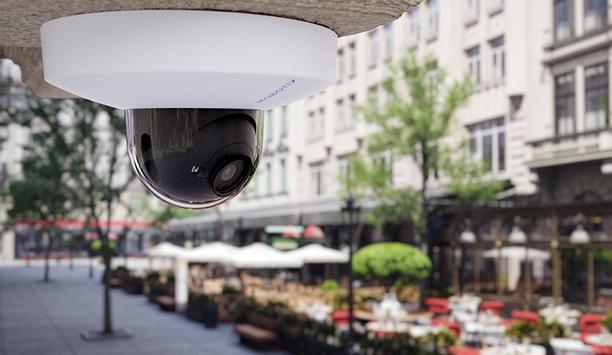
5 easy steps to an upgraded video surveillance system
Download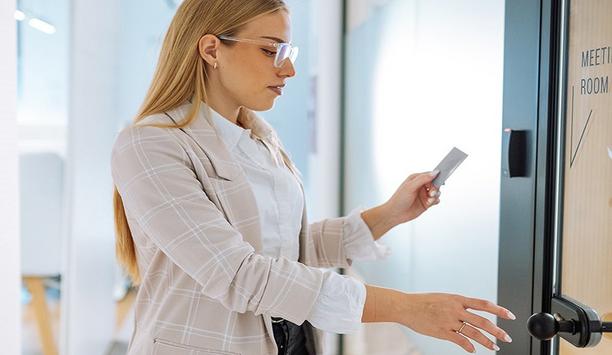
Combining access control and intercoms for better security
Download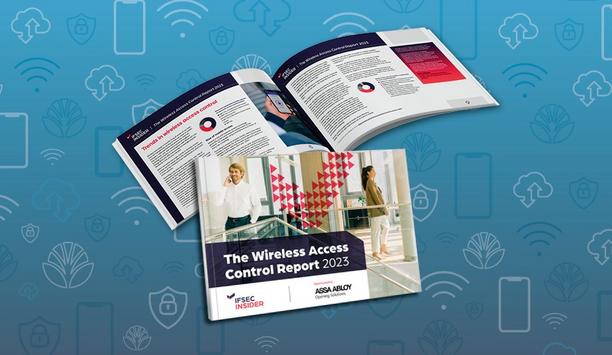
The wireless access control report 2023
Download
Machine Operator Authentication
Download
Unlocking wide-angle camera dewarping
Download
Levelling up with campus safety
Download
Simple Security Solutions for SMBs
Download
IoT connectivity
Download
Modernizing facilities management
Download
Charting the path to safe cities
Download
Connected video technology for safe cities
Download
10 top insights in access, cloud and more
Download
Guide for HAAS: New choice of SMB security system
Download
Integrating IT & physical security teams
Download
Troubleshooting IP video systems
Download
5 easy steps to an upgraded video surveillance system
Download
Combining access control and intercoms for better security
Download
The wireless access control report 2023
Download
Machine Operator Authentication
Download
Unlocking wide-angle camera dewarping
Download

Videos
Internet of Things (IoT): Manufacturers & Suppliers

Using artificial intelligence (AI) to automate physical security systems
Download
A modern guide to data loss prevention
Download
7 proven solutions for law enforcement key control and asset management
Download
The truth behind 9 mobile access myths
Download
Access control system planning phase 2
Download


